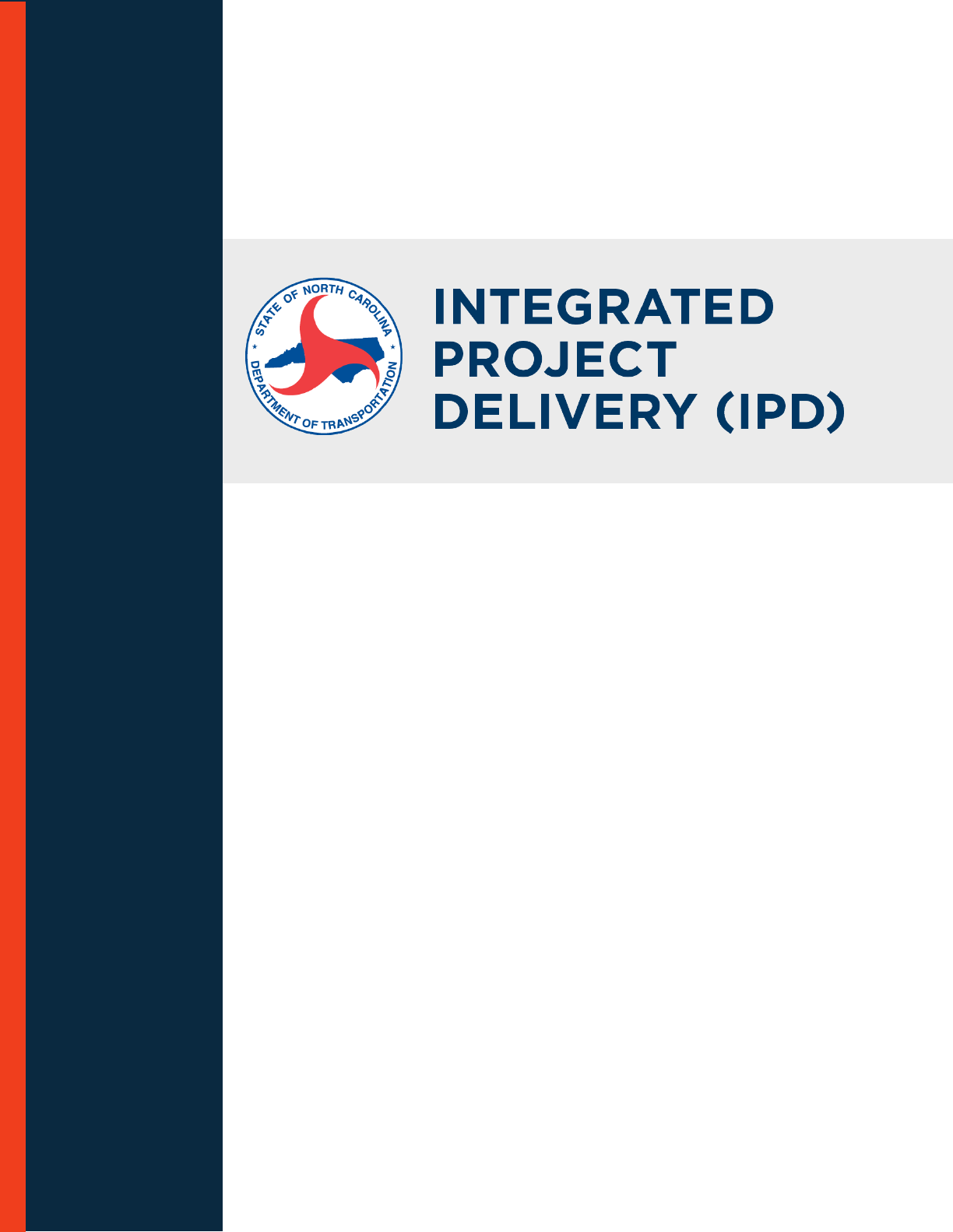
Project Management
Guide
Version 1.0
November 2021

Project Management Guide
November 2021
NCDOT
(This Page Intentionally Left Blank)

NCDOT Project Management Activity Diagram
November 2021
Support Construction
Post-Letting (4PM2)
Setup Project
(1PM1)
Project Management
(2PM1) (3PM1) (4PM1)
Obtain Consultant
(1PM3)
Hold Kickoff Meeting
(2PM2)
Hold Field Inspection
Review Meeting (2PM5)
Hold Design Complete
Review Meeting (3PM3)
Hold PS&E Review
Meeting (4PM3)
STAGE 1
Project Initiation
STAGE 2
Alignment Defined
STAGE 3
Plan-In-Hand
STAGE 4
Plans, Specifications,
& Estimates (PS&E)
& Letting
NTP
Let
Project
Complete Project Definition
Document (PDD) (2PM3)
Hold ROW Final Plan Set
Review Meeting (3PM2)
Field
Inspection &
Environ.
Document
Complete
Design
Complete &
All Permit
Applications
Submitted
Activity at the Project Manager’s discretion,
see PM Guide Narrative for details
Hold Project Initiation
Meeting (1PM2)
Hold ROW, Utility & Permits
Strategy Meetings (2PM4)

Project Management Guide
November 2021
NCDOT
PM Guide Updates
The PM Guide is intended to be dynamic and continually improving. NCDOT encourages suggestions and
comments from users. To submit questions, comments, markups, or live edits go to
NCDOT PDN & PM
Guide Comment Submission Form (under Tools/Templates).
Submitted comments will be reviewed on a regular basis for incorporation into the document.

Back to PM Activity Diagram
Project
Initiation
Alignment
Defined
Plan-in-Hand
PS&E/Letting
Post-Letting/
Construction
Preface i
November 2021
NCDOT
This Introduction is intended to provide
An overview of the purpose and responsibility of a Project Manager
An understanding of the makeup and importance of a project team
Requirements for Project Managers
Awareness of the systems, platforms, and reference materials that aid in coordination,
collaboration, and reporting
Orientation and instruction on navigating the PM Guide
Introduction
The Project Manager is responsible for understanding and implementing the contents of this Guide and
performing project management duties as outlined in the Project Delivery Network (PDN). This guide
helps Project Managers lead project teams and work collaboratively with team members through
activities outlined in NCDOT’s Project Delivery Network. The Project Manager works with technical experts
and stakeholders (internal and external) to achieve a project’s goals through the scope of work, schedule,
budget, quality, and risk (SSBQR) standards.
The PM Guide provides a reference for both NCDOT Project Managers and Project Managers from private
engineering firms (PEF). The PEF Project Managers develop the deliverables and work products described
within this Guide that do not explicitly specify an NCDOT Project Manager to accomplish.
The PM Guide is not a cookbook with step-by-step instructions. It does not replace critical thinking (e.g.,
a Project Manager still needs to make decisions about acceleration or efficiency in delivering a project,
navigating risk, and resolving issues). It is not meant to communicate order of operations, nor is it meant
to define relationships with other activities. This PM Guide is not all encompassing of every task,
deliverable, and responsibility in which a Project Manager engages; and multiple activities described in
the PDN specify expectations for a Project Manager’s involvement.
An overview of the purpose and responsibility of a Project Manager
Purpose of a Project Manager
The Project Manager leads a team in delivery of projects in accordance with the PDN and the Division
Engineer’s intent for the project. This generally involves:
Organizing a Team. Assembling, aligning, and sustaining the NCDOT, private engineering firm
(PEF), and general engineering services consultant (GESC) team members to achieve project goals
and scope.
Managing a schedule and budget. Working with the team members to develop, track and monitor
a
schedule and budget for delivery of the project.

Back to PM Activity Diagram
Project
Initiation
Alignment
Defined
Plan-in-Hand
PS&E/Letting
Post-Letting/
Construction
Preface ii
November 2021
NCDOT
Promoting multidisciplinary collaboration. Inviting communication across disciplines through
each stage of the process and resolving issues.
Coordinating with external stakeholders. Enhancing the NCDOT team’s understanding of external
s
takeholders’ (local authorities, agencies, utilities, property owners and occupants) needs and
inputs at each stage of the process.
Monitoring project delivery progress. Managing risks and opportunities, driving, and
communicating decisions, and obtaining resources to achieve SSBQR commitments.
Reporting key metrics of project performance. Informing NCDOT leaders of each project’s
performance, consistently delivering quality projects on time and on budget while building a
culture where we deliver what we promise.
PM Responsibilities
The Project Manager plans, monitors, coordinates, and evaluates project activities from initiation through
letting. The Project Manager is accountable for the following.
Managing the project to attain project goals.
Monitoring, evaluating, and reporting the project schedule.
Monitoring, evaluating, adjusting, and reporting the project expenditures.
Ensuring the project team completes quality processes.
Identifying and managing project risks.
Ensuring the project team is well-organized and functional.
Leading project team meetings and design reviews.
Achieving customer satisfaction.
Negotiating technical resource needs.
Conducting consultant procurement and negotiations.
Conducting public and stakeholder coordination and involvement.
Coordinating and communicating among project team members, external stakeholders, and
internal stakeholders.
Providing input for evaluation of team members’ performance.
Identifying, resolving and elevating project issues early.
Ensuring timely resolution of conflicts.
Managing change.
Project Delivery Prospective
This PM Guide and the accompanying Project Delivery Network (PDN) provide Project Managers and their
teams with a framework to develop an individualized “roadmap” for delivery of a project. No two projects
progress exactly the same. The Project Manager works with the project team to develop a vision for
coordination and to efficiently execute necessary activities and tasks tailored to account for the risks,
opportunities, and constraints associated with delivery of the project. They lead the project teams in
determining which activities, tasks, and deliverables are applicable for the project. Project team members
often complete activities, tasks, and deliverables in parallel with other activities, tasks, and deliverables.

Back to PM Activity Diagram
Project
Initiation
Alignment
Defined
Plan-in-Hand
PS&E/Letting
Post-Letting/
Construction
Preface iii
November 2021
NCDOT
The Project Delivery Vision illustration below (Figure 1) conveys a conceptual framework of how projects
come together under the Project Management Guide and PDN. It illustrates how teams may work
simultaneously on activities and deliverables resulting in the opportunity to expedite delivery.
Figure 1 Project Delivery Vision
Understanding the makeup and importance of a project team
Successful delivery of a project depends on the project team overcoming barriers to collaboratively work
together. NCDOT is a matrix organization where project team members report directly to their technical
discipline/unit managers as well as NCDOT Project Managers. Team members receive technical
supervision from their technical discipline/unit manager and project supervision from NCDOT Project
Managers. Team members are expected to coordinate closely with the Project Manager and report
progress completing activities, deliverables, and tasks. Project team members work across disciplines to
help each other coordinate efforts and resolve project issues. The Project Manager provides the support
and leadership to aid the team in these efforts. To provide this leadership and support, the Project
Manager must understand the needs and expectations of their key customers as follows:
The project team is made up of all individuals responsible for performing work outlined in the PM
Guide and PDN including but not limited to NCDOT technical disciplines/units, profession
al
e
ngineering firms (PEFs), and general engineering services consultants (GESCs.)
The external stakeholders are described as those individuals or entities with an interest and/or a
stake in the delivery or outcome of the project. This generally includes third-parties, loc
al
go
vernment/municipalities, local authorities, agencies, utilities, property owners and the general
public (to name a few.)
The internal stakeholders include the Division Engineer, Department Leadership and NCDOT staff
who partner with the project team on processing or approving project documents.
Figure 1

Back to PM Activity Diagram
Project
Initiation
Alignment
Defined
Plan-in-Hand
PS&E/Letting
Post-Letting/
Construction
Preface iv
November 2021
NCDOT
Project Team
The Project Manager helps create a collaborative and trusted environment by knowing the team, their
individual strengths, weaknesses, and motivations. This allows the Project Manager to determine where
support, in the form of subject matter experts or additional staff, may be needed to assist team members.
The Project Manager encourages the direct coordination of team members to discuss and resolve their
concerns.
External Stakeholders
NCDOT partners with local governments/Metropolitan Planning Organizations (MPO) and Rural Planning
Organizations (RPO) to provide safe and reliable transportation facilities. These partnerships often result
in agreements. The NCDOT Project Manager engages in development of project-specific agreements
and/or memorandums of understanding (MOU) to satisfy the requirements of both parties.
The Project Manager and project team work together to develop specific outreach strategies for the public
and property owners. The Project Manager develops a public involvement plan in coordination with the
Public Involvement team. These plans are included in the Project Communication Plan.
Internal Stakeholders
The Division Engineer or assigned designee, is the owner of the project and responsible for delivering the
project. The Project Manager is acting on behalf of the Division Engineer to guide the project team. The
Division Engineer is the responsible party for approving the scope, schedule, and budget parameters of
the project and supporting the project team decisions to achieve adherence within these parameters. The
Project Manager meets with the Division Engineer, or designated representative, on a regular basis to
report on the progress of the project.
Internal stakeholders include those units responsible for setting statewide functional policies, procedures,
and standards; and may include overseeing federal or state programs. The Project Manager captures,
tracks, and reports on the scope, schedule, and budget to enable these Department leaders to understand
and assess program wide performance over time.
Team Meetings
Throughout the activities in the PDN, the Project Manager is called upon to coordinate team meetings
and meetings with one or more disciplines. It is good practice to delegate the coordination of meetings,
however, the NCDOT Project Manager is responsible for leading and facilitating these meetings.
The project team participates in team meetings typically scheduled monthly. The project team members
provide information and topics for meeting discussions. Often, these meeting discussions and feedback
lead to producing work products and deliverables. Topics/agenda items may include:
New project information and project issues
Changes which may impact other disciplines
Issues regarding development or completion of permits/agreements
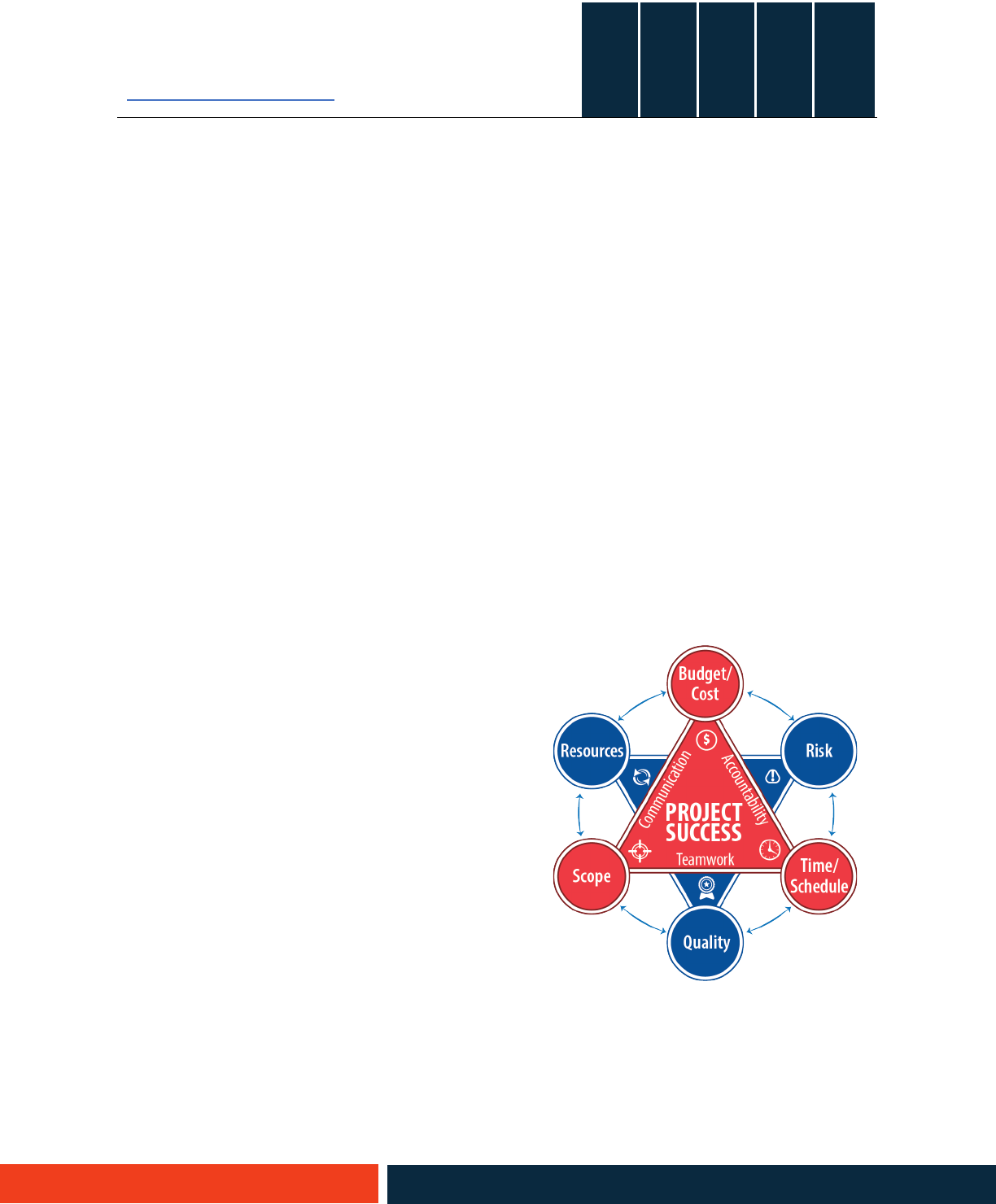
Back to PM Activity Diagram
Project
Initiation
Alignment
Defined
Plan-in-Hand
PS&E/Letting
Post-Letting/
Construction
Preface v
November 2021
NCDOT
Schedule including current and upcoming deliverables, tasks, meetings, action items with
completion dates, next steps, etc. (look ahead
two weeks, two months, and six months)
Budget review including project costs
Quality commitments and expectations
Resolution of project risks (utilizing the Risk Assessment Worksheet)
Working with the project team, the Project Manager outlines protocols for communication within the
Project Communication Plan. Examples include:
Meetings and person-to-person communication is best when seeking clarity and consensus.
Video and phone calls are effective for appropriate situations.
Email is acceptable to document significant decisions.
To ensure timely delivery and improve quality, the team discusses issues and concerns immediately when
they arise and does not wait for a project team meeting or the next major milestone review. The Project
Manager does not need to participate personally in each meeting between team members; however, to
avoid surprises, reduce rework, and build trust, the Project Manager and team members notify each other
prior to or immediately following meetings where major/key decisions are discussed and topics that
impact SSBQR are examined.
Requirements for Project Managers
The Project Manager is responsible to capture, track, and report on scope, schedule, budget, quality and
risk (SSBQR) to enable Department Leadership to understand and assess program wide performance. The
Project Manager is expected to utilize tools, templates and
manuals, (e.g., the Quality Management Manual and Risk
Assessment Worksheet.)
The Project Manager ensures the project adheres to the
Department’s policies and procedures, as well as various
requirements as set forth through manuals, guidance
documents and agreements with regulatory or
participating entities.
Figure 2 Project Success Diagram
In addition, the Project Manager provides staffing (PEF or
GESC), communicates early and often, addresses issues
directly and promptly (bad news does not age well), and
sets clear expectations for what needs to be accomplished
by when. A few guiding key principles for Project
Managers to deliver predictable and reliable SSBQR
outcomes is described below and illustrated in Figure 2.
Figure 2
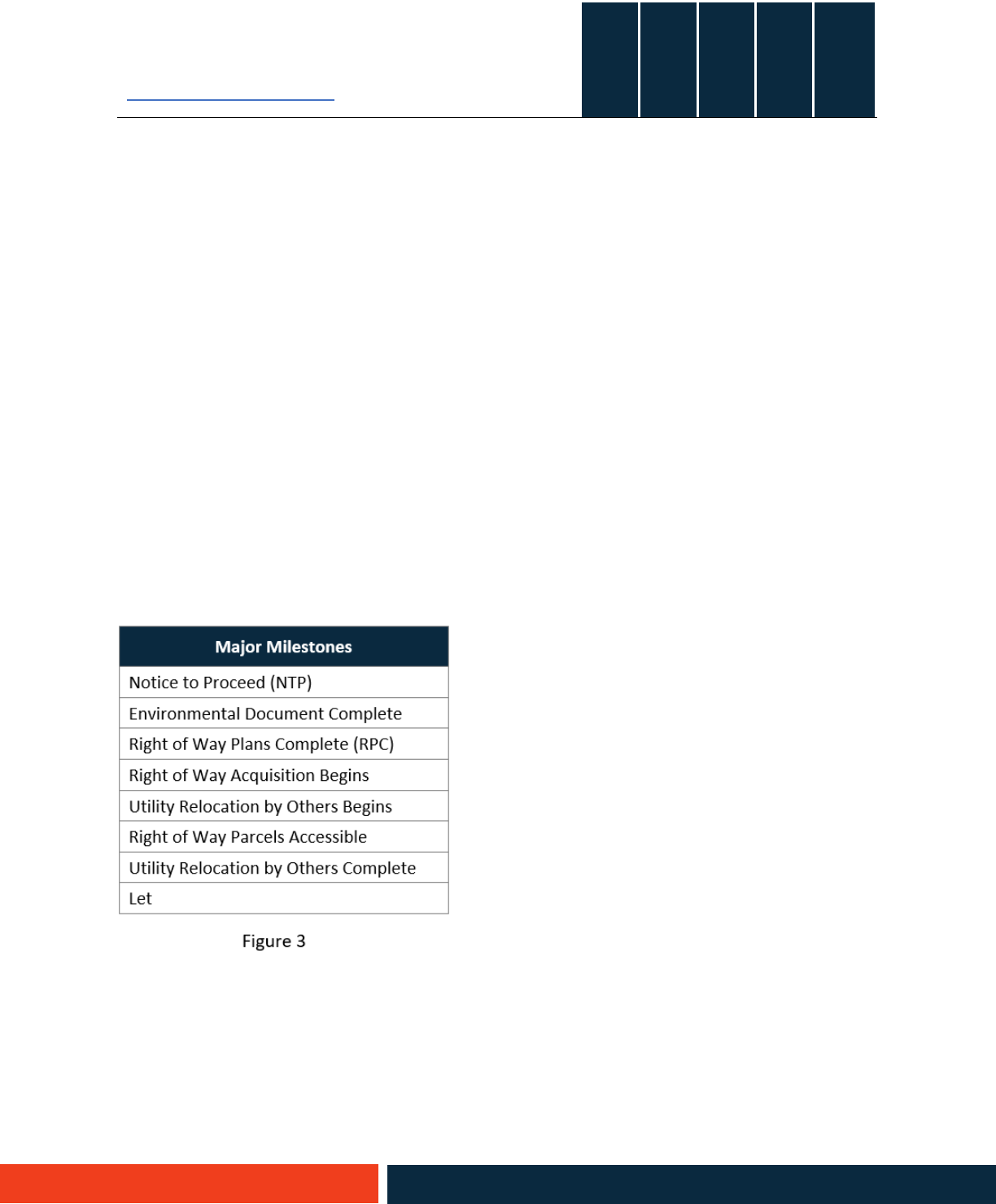
Back to PM Activity Diagram
Project
Initiation
Alignment
Defined
Plan-in-Hand
PS&E/Letting
Post-Letting/
Construction
Preface vi
November 2021
NCDOT
Managing the Scope
The Project Manager organizes the project based on the scope of the project as identified in the project
scoping report (PSR). At the discretion of the Project Manager, or as instructed by the Division Engineer,
the Project Manager may elect to later finalize the project scope through the development of a Project
Definition Document. The PDD distinctly identifies, what the project work does and does not include and
clarifies the intended schedule and budget commitments to accomplish this work.
While this document is not necessary for all types of projects, and is not required, its use is recommended
for larger, more complex projects. These may include State Transportation Improvement Program (STIP)
projects, major bridge replacement projects, high profile projects, or projects that have an aggressive
schedule. The Division Engineer may choose to use this document to delegate authority to the Project
Manager and team members enabling them to make project decisions to deliver the project within the
defined SSBQR parameters therein. The net result is to reduce scope creep and empower the team to
anticipate and resolve project issues within agreed upon budget and schedule delivery expectations.
Managing the Schedule
The Project Manager develops, tracks, and manages the project delivery schedule using Microsoft Project
(MS Project). The PEF Project Manager develops an MS Project Schedule in coordination with and inclusive
of all NCDOT, GESC, and PEF team member responsibilities involved in delivery of the project. This ensures
a comprehensive schedule regardless of who completes the work and includes NCDOT/GESC reviews. The
schedule is used to coordinate activity durations, the sequencing of activities based on interdependencies,
expectations for achieving major milestones, and
deliverable dates culminating with project letting.
Figure 3 Major Milestones
The technical discipline/unit manager reviews the project
schedule to understand their staff’s workload.
The Project Manager fosters buy-in and commitment
from the project team and the Division Engineer to
deliver the project within the schedule parameters. The
project team members prevent surprises by alerting the
Project Manager to potential schedule issues that impact
scope, budget, or other team members.
The Project Manager is responsible to maintain major
milestone for each project that measures individual
project and overall programmatic performance as shown
in Figure 3. For projects designed and managed using predominately NCDOT discipline leads, the Kickoff
Meeting (2PM2) represents the NTP.

Back to PM Activity Diagram
Project
Initiation
Alignment
Defined
Plan-in-Hand
PS&E/Letting
Post-Letting/
Construction
Preface vii
November 2021
NCDOT
When developing project schedules, the Project Manager ensures realistic durations and appropriate
linkages between tasks based on project requirements, not hypotheticals. The following are examples of
items the project team considers when developing the schedule.
Requests for obligation of funds
Environmental permit applications
Agency reviews and coordination
Development of cost estimates
Timeframe for deliverables and plan reviews
Utility agreements/permits/relocations
Right of Way acquisitions and relocations
Managing the Budget
The Project Manager manages the budget and delivers the project within the programmed funding and
as approved by the Division Engineer. The project budget consists of the funding (revenues) and project
costs (expenditures).
Funding. The project funding includes all federal, state, and/or local government funds and may include
funding from third parties for betterments. As outlined in the Preconstruction Finance Guide, the Project
Manager is responsible for various reporting requirements and should follow the administrative
procedures and guidance therein.
A primary responsibility of the NCDOT Project Manager is to request funds through letting. For Central
and some Division managed projects, the Project Manager makes funding requests using the Automated
Funding Request Application (AFRA) for preliminary engineering, right of way, utility, and construction
costs. Further detail on administering the funds for a project may be found in the Preconstruction Finance
Guide.
Project Costs. The total project cost consists of preliminary engineering, right of way, utility, and
construction cost estimates. The Project Manager is responsible to participate and fulfill their
responsibilities as outlined in the STIP Cost Estimate Process Flowchart and Verified Estimates Interim
5W’s Guide for STIP Projects. This includes:
Reviewing and coordinating the development of the total project cost estimate,
Confirming the estimate is reasonable and includes all applicable items,
Ensuring estimates are prepared and reviewed by knowledgeable technical experts, and
Distributing to the proper parties.
Perform Quality Oversight
In accordance with the Quality Management Manual, the Project Manager is responsible for providing
quality reviews of all final work products, specifically ensuring final work products underwent the quality
process and the appropriate level of quality oversight.

Back to PM Activity Diagram
Project
Initiation
Alignment
Defined
Plan-in-Hand
PS&E/Letting
Post-Letting/
Construction
Preface viii
November 2021
NCDOT
Managing Risk
Project Managers are responsible for coordinating with their team members, disciplines/units, Division
Engineers, consultants, and the appropriate project stakeholders to develop and manage their project
risks. When a project transitions into the Alignment Defined Stage (PDN Stage 2), the Project Manager
initiates development of the Risk Assessment Worksheet (RAW), a tool for the Project Manager to use
throughout Stages 2, 3 and 4 to document and manage project uncertainties. Risks evolve as the project
evolves; therefore, it is essential that risks are continuously identified, evaluated, communicated among
team members, monitored, managed, and refined as the project advances through these phases. The
Project Manager leads risk management in accordance with the principles outlined in the Risk
Management Guide.
Project Reporting
The Project Manager is responsible for various administrative actions to report project status to the
Department. The main reporting items include the following:
Scope. Reporting work completed through the activities in the Project Delivery Network (PDN) to
p
rovide the transportation improvements identified in planning.
Schedule. Reporting the project delivery status in terms of meeting major milestones.
Budget. Reporting consists of expended and proposed costs of the project within the programmed
and approved funding.
Risk. Reporting risks in accordance with the Risk Management Guide. For risks effecting the
schedule and budget, notify the Division Engineer and project team.
Awareness of the systems, platforms, and reference materials that aid in
coordination, collaboration, and reporting
The Project Manager becomes familiar with and clearly identifies the expectations for the project team’s
use of available systems that aid in coordination, collaboration, documentation, and reporting. The
Project Manager is also aware of the specific systems (e.g., ETRACS) used to identify, inform, and track
internal workflow, deliverables, dates, etc. The Project Manager discusses the project team’s
responsibility for updating and maintaining the tools/systems/platforms and keeping their technical
discipline/unit apprised of the project expectations, systems may include:
ATLAS Workbench. Storage and posting of final documents, supporting clearance memos,
determinations, correspondence, and technical studies completed in Stage 1 and 2 of the PDN.
SAP. Business and Financial system used to manage contracts, purchase orders, financial data,
cost planning, funding requests, official project schedules (major milestones), NCDOT employee
services, and reporting of schedule and financial data.
MS Project. Scheduling software used to aid the Project Manager and team in organizing, tracking,
monitoring, and executing risk and opportunity management through all stages of PDN delivery.
SharePoint. Primary project location to store, organize and share all non-CADD project
in
formation including quality reviews.

Back to PM Activity Diagram
Project
Initiation
Alignment
Defined
Plan-in-Hand
PS&E/Letting
Post-Letting/
Construction
Preface ix
November 2021
NCDOT
ProjectWise. Primary project location to store, organize and share all CADD information.
CLEAR (Communicate Lessons, Exchange Advice, Record) Program. Collects lessons learned,
innovative ideas, and best management processes are shared throughout the Department.
Municipal Agreements Request System. Accounts receivable system for processing and tracking
agreements (e.g., municipal agreements).
Project Manager Resources
The Department has developed standards, manuals, and guidance documents for administering policies
and procedures necessary to execute project delivery. The PM Guide includes a “References” section
within each Activity identifying relevant documentation. Note: The “References” section should not be
construed as a comprehensive list of all the resources a Project Manager utilizes but rather provides a list
of the guidance documents for the project.
Project Management Links
The summary below sorts the references listed in the Activities in the PM Guide by category.
Finance Related References
3-22-2021 Memo to DEs, PMs, Corridor Eng – Approval for Cost Verification (Internal NCDOT Only)
Guidelines, Forms and Consultant Utilization
NCDOT Scope and Manday Estimate Form
Policies and Procedures for Procurement and Administration of Major Professional or
Specialized Services Contracts
Certifications Required for STIP Projects Memo – Jan 25, 2021
Contract to NTP Process (Purchase Order Limited Services Contract)
Preconstruction Finance Guide
STIP Cost Estimate Process (Internal NCDOT Only)
Utility WBS Phase 250 – Utilities Relocation WBS – Nov 11, 2020 (Internal NCDOT Only)
Value Assessment Page Cost Containment Considerations (Under Links Right Column)
Verified Estimates Interim 5W’s Guide for STIP Projects (Internal NCDOT Only)
Process & Tools References
Agenda and Meeting Minutes Template (Tools/Templates)
CLEAR Program
Combined Field Inspection Questions (Download)
Constructability Review Program
Constructability Review Checklist
Construction Contract Decision Matrix (Type Of Project Delivery, Download)
2-11-2021 NCDOT Construction Revision Memorandum (Design Resources Page Under Memos,
Design)
– Construction Revision Memorandum Example
Guidelines, Forms and Consultant Utilization

Back to PM Activity Diagram
Project
Initiation
Alignment
Defined
Plan-in-Hand
PS&E/Letting
Post-Letting/
Construction
Preface x
November 2021
NCDOT
– Consultant Evaluation Process Memo and Policy (Under Guidelines)
Executive Status Report (sample Under Tools/Templates)
Post Construction Assessments Access (Green Login Button Right Side Under Project Knowledge
Sharing)
Post Construction Assessments (Link To Map Of All Projects Under Project Knowledge Sharing)
Pre-Let Field Inspection Questions (Download)
Project Communication Plan Template (Tools/Templates)
Project Contact List Template (Tools/Templates)
Project Definition Document (PDD) Template (Tools/Templates)
Project Flow Chart Generator (Central Let Projects)
Project Schedules
– MS Project Schedule Template(s) (Tools/Templates)
Quality Management Manual
Risk Assessment Program
– Risk Assessment Worksheet (RAW)
– Risk Management Guide
Standards for Scope of Services (In Development)
Disc
ipline Guidance References
Candidate Project Guidance (Tools/Templates)
Bidding & Letting
Division Let Contract Guidance (2021 Division Let Guidance March under Featured)
Local Project Administration
Local Programs Management Office
NCDOT Right of Way Manual
Professional Engineering Firm Management Guide
Project Delivery Network (PDN) (Tools/Templates)
Public Involvement Plan (NCDOT Statewide PI Plan)
Roadway Design Manual (Roadway Design Project Resources, Helpful Links)
Utilities Information (Manuals, Design Standards, Permitting, Agreements)
Value Engineering Program
Value Management Office (CLEAR, Constructability, Risk)
Orientation and instruction on navigating the PM Guide
Project Management Guide
The Project Management Activity Diagram is a complement to the PDN Activity Diagram and provides a
one-page interactive visual companion to the PM Guide. This at-a-glance summary outlines what the
Project Manager accomplishes at each stage of the project. This scalable process empowers Project

Back to PM Activity Diagram
Project
Initiation
Alignment
Defined
Plan-in-Hand
PS&E/Letting
Post-Letting/
Construction
Preface xi
November 2021
NCDOT
Managers to combine or incorporate activities and associated tasks with other activities at their own
discretion.
The PM Guide provides a description of the primary activities a Project Manager accomplishes and/or
considers for every project. It identifies expectations in the form of specific tasks and associated details
that are completed by the Project Manager. Additionally, it provides the Project Manager with a list of
deliverables, both required and discretionary, to aid in leading, managing and reporting.
The Project Management Activity Diagram operates like the PDN Activity Diagram, providing a direct link
from the diagram to each activity referenced. The diagram includes several key features to guide the user.
Milestones initiate and conclude each stage, denoted by diamonds.
Each stage represents a series of activities that may need to be completed before moving onto the
next stage.
– The activities are not laid out chronologically but are grouped by discipline. As such, the
network requires collaboration, led by the Project Manager, to determine what activities
apply and to define the logical relationships and order of activities for a specific project.
– Note, it may be advantageous to advance certain activities within a stage earlier or even
advance activities in later stages to the current stage, if it is more efficient to deliver the
project.
Each activity box is interactively linked to its associated section in the PM Guide.
– By clicking on an activity box, a user is directed to that section for further details.
– The header on each page includes a “Back to PM Activity Diagram” link that takes the user
back to the diagram.
Project Delivery
The PM Guide and PM Activity Diagram take a Project Manager through the processes of planning,
executing, monitoring, and reporting through each of the five Stages of the PDN. The following
descriptions summarize the elements of work the Project Manager focuses on in each stage.
Figure 4 The Five Stages of Project Delivery
Fi
gure 4
Stage 1: Project Initiation
After being assigned the project by the Division Engineer, the Project Manager, in collaboration with the
technical discipline/unit managers and leads:
Reviews the Final Project Initiation Packet including the Project Scoping Report which is finalized
during the Project Initiation Stage.

Back to PM Activity Diagram
Project
Initiation
Alignment
Defined
Plan-in-Hand
PS&E/Letting
Post-Letting/
Construction
Preface xii
November 2021
NCDOT
Organizes the project and project team and verifies project funding as well as the type of project
delivery.
Confirms project expectations, including a project description, project goals, and applicable PDN
activities and technical staff needed to perform the work.
Develops a preliminary project delivery schedule and budget including major milestones
anticipated to complete the project.
– Note: The NCDOT Project Manager may consider securing a PEF to support and perform
project management efforts for projects delivered with PEF production or predominantly by
NCDOT discipline leads.
Promotes the alignment of team members including roles, responsibilities, and expectations as it
relates to communication, management of risks and opportunities, and delivery of high-quality
project deliverables.
Identifies the staff required to deliver the engineering and support services to accomplish project
delivery through the PDN. This may include holding a Project Initiation Meeting (1PM2) to clarify
and confirm the work and services required of each technical discipline/unit involved in project
delivery.
– Where NCDOT staff are not available, the Project Manager acquires additional project team
resources through procurement of professional services. See Professional Engineering Firm
Management Guidance for Project Managers, Policies and Procedures for Procurement
and Administration of Major Professional or Specialized Services Contracts, and the
Preconstruction Finance Guide.
No
tice to Proceed (NTP) marks the end of Stage 1. For projects designed and managed using
predominately NCDOT discipline leads, the Kickoff Meeting (2PM2) represents the NTP.
Stage 2: Alignment Defined
During this stage, the Project Manager actively manages execution of the project. Project management is
a continuous process, not a series of singular events. The Project Manager begins this stage by assembling
the project team members at the Kickoff Meeting (2PM2). The purposes of the Kickoff Meeting are to
introduce the team, gain a clear understanding of the project goals, scope of work, the team’s scope of
services to provide a construction plan set, and review each team member’s role in delivering the project.
The Project Manager, in consultation with the project team, solidifies the schedule and budget
commitments to deliver the project through construction. At the discretion of the Project Manager or as
instructed by the Division Engineer, the Project Manager may elect to document these commitments in a
Project Definition Document (PDD). The Project Manager must obtain approval from the Division Engineer
on changes to scope, schedule and budget through all stages of project delivery whether a PDD is
developed or not.
Paramount to success of the project is maintaining and sustaining communication with the project team
members, as well as external and internal stakeholders responsible for the project delivery program. The
Project Manager employs several methods of communication. One method is regularly holding project

Back to PM Activity Diagram
Project
Initiation
Alignment
Defined
Plan-in-Hand
PS&E/Letting
Post-Letting/
Construction
Preface xiii
November 2021
NCDOT
team meetings, starting in Stage 2 and continuing through Stage 4. These meetings are commonly
scheduled each month; attendance varies based on the topics and agenda items. These meetings promote
multidisciplinary collaboration to:
Discuss ongoing work, as well as which deliverables and tasks are coming up in the next two weeks,
two months, and six months. This ensures all team members understand the expectations and are
committed to meeting the schedule
.
Track, monitor, communicate, and collectively resolve project issues related to SSBQR and
o
pportunities.
Work with external stakeholders (e.g., local authorities, regulatory and permitting agencies,
utilities, property owners, etc.) to understand their needs and ideas to mutually beneficial
outcomes.
Align the team to execute the right of way, utility, and permitting efforts and identify the
requirements and resources the Project Manager brings to the table to support those efforts
through holding Right Of Way, Utility & Permits Strategy Meetings (2PM4).
Support the Department’s efforts to manage the overall program of projects through executive
briefings and reporting.
P
rior to completion of Stage 2, the Project Manager consults and coordinates with the Division
Construction Engineer who leads and facilitates the Field Inspection Review Meeting (2PM5). The Project
Manager’s role during this meeting is to assess the project’s conformity with intended SSBQR objectives
(this includes making sure the proposed work is constructable and maintainable).
Stage 3: Plan-in-Hand | Stage 4: Plans, Specifications, & Estimates (PS&E)/Letting
During these stages, the Project Manager proactively manages and champions the delivery of the project
through:
Concentrated team building and supporting team members and Department Leadership in
re
solving issues and challenges that arise.
Helping the team to anticipate risks and prepare for opportunities in both the delivery plan set
d
ocuments and associated acquisitions, agreements, and permits.
Guiding the planning and preparation for support after award of the construction contract.
Promoting proactive communication with interested parties (Department Leadership, local
government, agencies, businesses or other interested third parties) to understand, inform, and
reinforce the project’s expected outcomes and progress.
The Project Manager accomplishes this work by holding project team meetings, briefing Department
Leadership, and updating systems and platforms that aid in coordination, collaboration, and reporting. As
the intensity of coordination with external stakeholders (from right of way negotiations, ongoing utility
outreach, and furtherance of permitting efforts) increases, the likelihood of design changes increase. The
Project Manager is encouraged to continue holding Right of Way, Utility & Permits Strategy Meetings
initiated in (2PM4) to thoroughly vet potential design changes and clarify expectations to maintain team

Back to PM Activity Diagram
Project
Initiation
Alignment
Defined
Plan-in-Hand
PS&E/Letting
Post-Letting/
Construction
Preface xiv
November 2021
NCDOT
alignment. The Project Manager continues to proactively track, monitor, and manage SSBQR, alerting the
team to issues that impact the project.
The following examples illustrate the objectives outlined above. A Project Manager:
Holds a right of way Final Plan Set Review Meeting (3PM2) (inclusive of division construction and
maintenance representatives) prior to finalization of the right of way package to confirm the
proposed full, permanent, or temporary acquisition areas.
Engages with the Division Construction Engineer (DCE) and the Resident Engineer to determine
exp
ectations for design and communication support during construction.
Prior to completing Stages 3 and 4, the Project Manager assesses the project’s conformity with intended
SSBQR objectives (including making sure the proposed work is constructable, maintainable, and project
documents are complete and biddable). The Project Manager also verifies all agreements, permits,
certifications, consultations, and funding authorizations have been completed. The following highlight
examples of agreements developed by others:
Programs Management Office. Develop municipal, utility construction, bus on shoulder, and
d
evelopment agreements
Rail Division-Surface and Encroachments Manager. Develop railroad encroachment agreements
Structure Management Unit/Assistant State Structures Engineer. Develop railroad agreement for
new bridge construction or rehabilitation of existing bridges over existing railroads
External Stakeholders. Develop MOUs (memorandums of understanding) for land transfer
agreements, section 106, conservation easements, etc.
Stage 5: Post-Letting/Construction
During this stage, the Project Manager supports the Division representative/Resident Engineer to ensure
project commitments are implemented and field issues that require coordination efforts with design team
members are addressed and resolved. This includes establishing the deadlines to revise, review, and
comment on necessary construction revisions. The Project Manager consults the PDN Activity
Construction Revisions (5CS1) for further detail on their responsibilities during this stage. The Project
Manager ensures project commitments are implemented.
In accordance with the CLEAR program (see p. viii), the Project Manager documents any changes that
impact delivering the preliminary engineering or the construction portion of the project. Searching the
CLEAR database using key words (e.g., project location, type, areas of concern, etc.) provides access to
experts, solutions, past successes and errors to deliver a project more efficiently. The lessons learned
through all stages are curated for the benefit of delivering more efficient projects.
Upon award for construction, the construction personnel take over leadership for the project. No further
project reporting regarding project SSBQR of the project delivery is required by the Project Manager in
this stage.

Back to PM Activity Diagram
Project
Initiation
Alignment
Defined
Plan-in-Hand
PS&E/Letting
Post-Letting/
Construction
1PM1 Setup Project 1
November 2021
NCDOT
1PM1 Setup Project
Overview
The purpose of this activity is to organize the project and project team, verify project funding, confirm the
type of project delivery, and create a scope of work, delivery schedule, and budget.
The Project Manager initiates this activity by reviewing the Project Scoping Report (PSR) and other
available information. Then identifies the team and leads them in developing a scope of services,
schedule, budget, project communication plan, and risk assessment worksheet. The Project Manager also
establishes clear expectations regarding quality.
The NCDOT Project Manager may secure professional engineering firm (PEF) resources to support project
management responsibilities.
References
3-22-2021 Memo to DEs, PMs, Corridor Eng – Approval for Cost Verification (Internal
NCDOT Only)
Candidate Project Guidance (Tools/Templates)
Post Construction Assessments Access (Green Login Button Right Side Under Project
Knowledge Sharing)
Construction Contract Decision Matrix (Type Of Project Delivery, Download)
Project Schedules
MS Project Schedule Template(s) (Tools/Templates)
NCDOT Scope and Manday Estimate Form
NCDOT Standards for Scope of Services (in development)
Preconstruction Finance Guide
Project Delivery Network (PDN) (Tools/Templates)
Public Involvement Plan (NCDOT Statewide PI Plan)
Quality Management Manual
STIP Cost Estimate Process (Internal NCDOT Only)
Value Management Office
Value Assessment
Value Engineering Program
Risk Management Guide
Risk Assessment Worksheet (RAW) (Under Program Links)
Verified Estimates Interim 5W’s Guide for STIP Projects (Internal NCDOT Only)
Project Communication Plan Template (Tools/Templates)
Deliverables
Deliverable Task
1
Draft Scope of Services
Project Budget
Review Project Scoping Report (PSR)
Assess Stakeholder Needs

Back to PM Activity Diagram
Project
Initiation
Alignment
Defined
Plan-in-Hand
PS&E/Letting
Post-Letting/
Construction
1PM1 Setup Project 2
November 2021
NCDOT
Deliverable Task
1
Draft Risk Assessment Worksheet
Project Communication Plan
Identify Permits and Agreements
Identify Project Team
Develop Preliminary Engineering Services Documents
– Develop Project Scope of Services
– Communicate Major Milestone Schedules
– Establish Project Budget
– Establish Quality Oversight
– Perform Risk Assessment
– Develop Project Communication Plan
Authorized Funding
Verify Programmed Funds
Request Preliminary Engineering (PE) Funds
1
Responsible Party: The Project Manager completes the tasks outlined in the table.
Review Project Scoping Report (PSR)
The Project Manager coordinates with the Division Engineer, Corridor Development Engineer, and others
as described within the PDN, to review the Project Scoping Report (PSR) as well as other background
information to confirm relevance of traffic forecast, the proposed project site footprint, potential impacts
to right of way and utilities, and the major items of construction work. In addition to the items listed in
Project Initiation Packet elements, review materials may include:
Traffic forecast
Strategic Prioritization Office (SPOT)/data supporting identified needs
Planning/corridor studies
Built/natural/social environment constraints
Express design
Complete Streets Scoping Memo
Project cost estimates for right of way, utility, and construction
Photogrammetry Mapping Product(s)
The Project Manager assesses the reliability of the data used to develop the PSR and supporting
documentation. The length of time since collection, and/or the limitations of the data determines its
reliability. The Project Manager accounts for and resolves ambiguities to accurately define the project,
this includes updating and verifying existing information, as well as collecting additional data as needed.
If any discrepancies are identified between the project definition/project scope and the Project Scoping
Report (PSR) and/or STIP (State Transportation Improvement Program), the Project Manager works with
the technical disciplines/units to align scope schedule and budget. Before proceeding, the Project
Manager notifies the Division Engineer of those recommendations to resolve the discrepancies, any
discrepancies that are not resolved, and any risks that may increase over time.

Back to PM Activity Diagram
Project
Initiation
Alignment
Defined
Plan-in-Hand
PS&E/Letting
Post-Letting/
Construction
1PM1 Setup Project 3
November 2021
NCDOT
Assess Stakeholder Needs
The Project Manager considers the potential impact to stakeholders as well as their interest level in the
project. The Project Manager verifies any prior commitments the Department has made with
stakeholders. The Project Manager is required to notify the Division Engineer (or designated staff) of any
upcoming external coordination.
If the project has local governments/Metropolitan Planning Organizations (MPO) and/or Rural Planning
Organizations involvement, the Project Manager discusses the following items with their designated
representative(s):
Project funding (i.e., approved State Transportation Improvement Program (STIP) amount and local
match), cash flow requirements, and local government funding approval processes
Potential betterments, project area commitments, or future local government needs
The respective roles, responsibilities, and involvement of the third-party in the project’s delivery
Identify Permits and Agreements
The Project Manager identifies, initiates, and follows-up directly with third-parties reliant upon the
Programs Management Office (PMO) to assist, instances requiring more specialized agreement types,
such as railroad encroachment agreements, railroad agreements for new bridge construction or
rehabilitation of bridges over existing railroads, and utility relocation agreements, the Project Manager
supports the various discipline leads who are responsible to identify, initiate and complete these
agreements, as per the PDN.
The Project Manager collaborates with the appropriate discipline leads to identify anticipated permits and
agreements required for delivery and completion of the project. These may include:
Municipal agreements
Railroad encroachment agreements
Utility agreements
Land transfer
Section 106 MOA (memorandum of agreement)
Conservation easement agreement(s)
Environmental permits
Federal Energy Regulatory Commission (FERC) approval
Coastal Area Management Act (CAMA) permit
US Coast Guard Bridge Permit
The Project Manager consults with the Environmental Policy Unit and other discipline leads to confirm
agency coordination needs and Merger Screening findings as described in PDN activities (e.g., 1EP1). The
complexity of the permits and agreements affects the schedule and budget of the project and informs the
Communication Plan via the Public Involvement Plan and project risks.

Back to PM Activity Diagram
Project
Initiation
Alignment
Defined
Plan-in-Hand
PS&E/Letting
Post-Letting/
Construction
1PM1 Setup Project 4
November 2021
NCDOT
Identify Project Team
At this early stage, the NCDOT Project Manager is encouraged to secure the services of a PEF to support
project management responsibilities identified within this PM Guide. The PEF Project Manager develops,
refines, monitors, and updates the documents identified within the PM Guide and as specified within
reference guides, manuals, and templates (e.g., scopes, MS Project schedules, cost estimates, risk
assessment worksheets, agendas, meeting notes, etc.).
Technical disciplines/units and Project Managers both secure contracts with PEF and GESC resources.
Regardless of who secures and manages a contract (the contract owner), all PEF and GESC team members
ultimately report to the NCDOT Project Manager and must receive the NCDOT Project Manager’s approval
prior to making any changes to scope, schedule, or budget.
The project team members work together to achieve the project objectives. The team may consist solely
of NCDOT employees, a combination of NCDOT employees and consultant team members, or solely
consultant staff with oversight from assigned NCDOT staff.
Project team members represent all disciplines to complete the successful project delivery. The NCDOT
Project Manager coordinates with the discipline managers and/or leads to identify the activities needed
to deliver the project based on the project description and their understanding of the project work,
schedule, budget, and risks provided in the PSR.
The NCDOT Project Manager, in consultation with the NCDOT discipline managers and/or lead(s),
determines what work is performed in-house, by a consultant, or by a combination of both. More
specifically, the NCDOT Project Manager clearly distinguishes the role of a PEF Project Manager, what
work is produced by the PEF, what work is produced by NCDOT staff, and what work is reviewed by the
DOT or a GESC. The NCDOT Project Manager confirms the appropriate level of quality oversight was
performed when completing quality reviews and when quality reviews are performed by PEF Project
Managers, they are completed in accordance with the Quality Management Manual. The decision to
complete the work with NCDOT staff versus a consultant includes the following considerations:
Technical needs of the project
Project risks (project delivery and technical)
Technical resource availability and capabilities within the Department
Limitations of schedule
Availability and expertise to complete quality reviews and quality process.
Much of these considerations require the NCDOT Project Manager to know the skills, abilities, and
availability of NCDOT internal staff to make this determination. If one or more consultants are needed to
support NCDOT’s technical disciplines/units, the Project Manager, in consultation with the applicable
discipline/unit managers, determines the best method for acquiring the necessary consultant resources.
The NCDOT discipline manager clearly defines the consultant’s role as a discipline lead or team member.
The NCDOT Project Manager approves the resource(s) selected and establishes the consultant’s role on
the team. All PEF Project Manager(s) report directly to the NCDOT Project Manager. The NCDOT Project

Back to PM Activity Diagram
Project
Initiation
Alignment
Defined
Plan-in-Hand
PS&E/Letting
Post-Letting/
Construction
1PM1 Setup Project 5
November 2021
NCDOT
Manager follows the guidance outlined in Obtain Consultant (1PM3) to procure consultant services for
the project.
Develop Preliminary Engineering (PE) Services Documents
The preliminary engineering services documents act as a roadmap for how the project team governs and
delivers the project, as well as their commitments related to their roles, responsibilities, and involvement.
These documents include but are not limited to the scope of services, preliminary schedule, budget,
communication plan, risk assessment worksheets, and quality checklists. These documents reside in one
easily accessible location for reference by all team members.
While initiating the development of these documents may occur prior to procuring the services of a PEF,
the PEF Project Manager should take lead in preparing them once contract authorization is provided by
the NCDOT Project Manager. The PEF Project Managers develop those deliverables and work products
described within this Guide that do not explicitly specify an NCDOT Project Manager to accomplish. The
NCDOT Project Manager provides direction and ensures the appropriate actions are taken to fulfill the
responsibility.
Develop Project Scope of Services
The Project Manager collaboratively develops a scope of services with the project team that defines the
needs of the project, project limits, deliverables, assumptions, and unknowns based on the Project
Scoping Report (PSR).
The Project Manager assigns discipline leads to develop their sections of the scope of services using
activities outlined in the PDN as a guide
(also see NCDOT Standards for Scope of Services in development).
Items to consider in the scope of services for each section should include:
Clearly written description of the tasks and subtasks
A list of specific deliverables
A
list of project unknowns and assumptions that may affect the discipline's delivery of the scope of
services within the project schedule and budget
D
ocumentation of what the project excludes to help align the project team’s understanding and
reduce scope creep during project delivery
The Project Manager compiles each discipline’s draft scope of services into a single document or file. Each
team member, inclusive of consultants working on the project, reviews the document to better
understand the expectations of each other’s efforts and resolve gaps or overlaps in responsibility.
The Project Manager consults with Value Management Office to ensure constructability reviews, risk
assessments, value engineering requirements (CR-RAVE), CLEAR submissions, and value assessment
activities are initiated as necessary, see PDN activities 1VM1 through 4VM1. While CR-RAVE, CLEAR and
Value Assessment activities include separate items, starting the items together allows the outcomes to
inform each other since they typically overlap.

Back to PM Activity Diagram
Project
Initiation
Alignment
Defined
Plan-in-Hand
PS&E/Letting
Post-Letting/
Construction
1PM1 Setup Project 6
November 2021
NCDOT
Communicate Major Milestone Schedules
The NCDOT Project Manager develops a preliminary schedule for major milestones based on the STIP. The
preliminary dates for the major milestones are provided to the PEF for developing the scope of services.
The PEF Project Manager develops an MS Project schedule as an initial deliverable in Stage 2 under activity
Project Management (2PM1).
The PEF Project Manager is responsible to include all the PEF team members’ production activities, as well
as the activities and tasks of all other NCDOT and/or GESC team members and continues tracking and
updating the project’s MS Project schedule. Additionally, these activities should include timeframes for
right of way acquisitions and relocations, individual utility company relocations, and PS&E turn-in prior to
advertisement.
Establish Project Budget
The Project Manager creates a preliminary project budget to ensure the funding is identified and adequate
to progress the work, as well as complete all stages of project development and construction. As outlined
in the Preconstruction Finance Guide, the Project Manager is responsible for various reporting
requirements and should follow the administrative procedures and guidance therein.
The Project Manager confirms the amount of funds programmed for the project satisfy funding for each
fiscal year through coordination with the STIP Unit Regional Manager. In collaboration with the project
team, the Project Manager verifies the total project cost and confirms it is within the programmed
amount.
The Project Manager and project team provide a comprehensive review of the right of way, utility and
construction cost estimate provided in the Project Scoping Report (PSR) to verify the project cost.
Estimates are reviewed to identify any increases or decreases in current unit costs. Any gaps or
deficiencies identified by the team may require updates to the estimates.
Further detail on administrating the funds for a project may be found in the Preconstruction Finance
Guide, STIP Cost Estimate Process and Verified Estimates Interim 5W’s Guide for STIP Projects Interim
Guidance.
Establish Quality Oversight.
The Corridor Development Engineer (or designee) performs quality oversight checks, as needed, on work
products developed in Stage 1. The Project Manager begins performing quality reviews once the project
team is in place and subject matter experts focusing on quality have completed and signed the checklist(s)
in accordance with the Quality Management Manual.
Perform Risk Assessment
The Project Manager develops the initial draft of the Risk Assessment Worksheet (RAW) using the Project
Initiation Form and the Project Scoping Screening Checklist included within the Project Scoping Report
(PSR). Key considerations for the Project Manager in this stage include, but are not limited to the
following:
Pre-construction phase delivery risks

Back to PM Activity Diagram
Project
Initiation
Alignment
Defined
Plan-in-Hand
PS&E/Letting
Post-Letting/
Construction
1PM1 Setup Project 7
November 2021
NCDOT
– Resource availability and level of experience (staff and funding)
– Communication expectations
– Stakeholder expectations
– Schedule and budget expectations
– Right of way and utilities timelines
Project technical related risks
The Project Manager consults the Risk Management Guide for further guidance regarding the roles,
responsibilities and level of effort anticipated through project delivery for risk management activities.
Develop Project Communication Plan
The Project Manager in coordination with the project team develop a project-specific Project
Communication Plan addressing the informational needs and expectations of the project team, executive
management, stakeholders, the public, and the media. It focuses on three major facets of project
communication:
Project team governance
Project reporting
Public information, including community outreach and media relations
The Project Manager, in consultation with the project team, creates operating guidelines that describe
how the project team governs itself. They identify those functions most performed by the team and
guidelines to navigate those functions. The guidelines address the expectations for some or all the
following:
Team decision-making process
Team meetings (structure, frequency, documentation, etc.)
Communication (method, uses, frequency, protocols, etc.)
Team issues and conflict management
Project status/reporting (recipient, requirements, frequency, etc.)
The Project Manager works with the Public Involvement Lead to develop a project-specific Public
Involvement Plan (PIP) addressing the needs of external and internal stakeholders, members of the public,
and the media. The Project Manager and designated project team members conduct proactive
stakeholder engagement throughout the life of the project in accordance with the established PIP.
The Project Manager uses the Project Communication Plan Template to aid in developing the draft
Communication Plan for the project and following the procedures outlined in Initiate Public Engagement
(1PI1) and Continue Public Engagement (2PI1) for development of the Public Involvement Plan (PIP), which
becomes by reference a part of the project specific Communication Plan.
The Project Manager reviews the draft Communication Plan with the project team then revises and
finalizes this plan based on their inputs, immediately following the Kickoff Meeting (2PM2).

Back to PM Activity Diagram
Project
Initiation
Alignment
Defined
Plan-in-Hand
PS&E/Letting
Post-Letting/
Construction
1PM1 Setup Project 8
November 2021
NCDOT
Verify Programmed Funds
The Project Manager verifies that preliminary engineering, utility, right of way, and construction cost
estimates are within the programmed amount for the project and allocated to the appropriate fiscal year.
Request Preliminary Engineering Funds
The Project Manager requests Preliminary Engineering (PE) Funds following procedures outlined in the
Preconstruction Finance Guide.

Back to PM Activity Diagram
Project
Initiation
Alignment
Defined
Plan-in-Hand
PS&E/Letting
Post-Letting/
Construction
1PM2 Hold Project Initiation Meeting 10
November 2021
NCDOT
1PM2 Hold Project Initiation Meeting
Overview
Prior to Notice to Proceed (NTP), the Project Manager organizes, leads, and facilitates the Project Initiation
Meeting with the Division Planning/Corridor Development Engineer, NCDOT staff, and appropriate GESC
resources. This optional meeting is generally held prior to securing professional engineering firm (PEF)
consultants. It provides an opportunity to bring discipline managers and leads together to initiate the
preparation of the scope of services required for each discipline, including identification of the required
PDN activities and discipline specific expertise and resources necessary to deliver the project.
For smaller or less complex projects, the Project Manager may forgo the Project Initiation Meeting
(1PM2) and begin with the Kickoff Meeting (2PM2).
References
Project Delivery Network (PDN) (Tools/Templates)
Value Management Office
Risk Assessment Program
Value Engineering Program
Agenda and Meeting Minutes Template (Tools/Templates)
Deliverables
Deliverable Task
1
Meeting Agenda
Meeting Materials
Meeting Notes
Setup Meeting and Develop Agenda
Invite Attendees
Distribute Meeting Materials
Hold Meeting and Document/Distribute Notes
1
Responsible Party: The Project Manager completes the tasks outlined in the table.
Setup Meeting and Develop Agenda
The Project Manager sets up the meeting and develops the agenda. The Project Initiation Meeting
discussions may include but are not limited to:
Project goals and key objectives
Project area commitments
– Bas
eline transportation improvements include capacity, safety, structures, Intelligent
Transportation Systems (ITS), Advanced Traffic Management System (ATMS), lighting,
multimodal facilities, integrated mobility—complete streets, and transportation access for all
users—service road requirements, etc.
Identify PDN activities and major milestones through letting

Back to PM Activity Diagram
Project
Initiation
Alignment
Defined
Plan-in-Hand
PS&E/Letting
Post-Letting/
Construction
1PM2 Hold Project Initiation Meeting 10
November 2021
NCDOT
Determine the need for formal risk assessment study and/or value assessment or value engineering
study (see 1VM1)
Discuss and confirm project team structure and expectations, as well as roles and responsibilities
including need for consultant(s) to augment the team
Invite Attendees
The Project Manager invites NCDOT staff and GESC resources to the Project Initiation Meeting. Potential
invitees include:
Meeting Invitees
Congestion Management Lead
District Engineer
Division Construction Engineer
Division Engineer
Division Environmental Officer
Division Maintenance Engineer
Division Planning/Corridor Development Engineer
Division Project Development Engineer & Team Lead
Division Traffic Engineer
Environmental Lead(s)
Geotechnical Lead
Hydraulics Lead
Integrated Mobility Lead
Location and Surveys Lead
Municipalities (MPO/RPO)
Permits Coordinator
Project Manager
Public Involvement Lead
Rail Lead
Regional Traffic Engineer & Delineation Lead
Resident Engineer
Right of Way Lead
Roadway Design Lead
State Transportation Improvement Program Representative
Structures Design Lead
Traffic Safety Lead
Utility Coordinator & Design Lead
Value Management Lead
Distribute Meeting Materials
The Project Manager gathers all relevant project materials (e.g., agenda, Project Scoping Report,
Integrated Mobility Scoping Memo, Complete Streets Worksheets, etc.) and distributes them to the
meeting invitees prior to the Project Initiation Meeting.
Hold Meeting and Document/Distribute Notes
The Project Manager facilitates the discussions outlined in the agenda. Then, the Project Manager or
designee documents and distributes the meeting notes to all meeting invitees.

Back to PM Activity Diagram
Project
Initiation
Alignment
Defined
Plan-in-Hand
PS&E/Letting
Post-Letting/
Construction
1PM3 Obtain Consultant 12
November 2021
NCDOT
1PM3 Obtain Consultant
Overview
The purpose of this activity is to procure professional services to complete specific portions of the project.
Consultants may be obtained separately, at different stages, and for varying lengths of time depending on
the project needs. The Project Manager determines the approach to contracting based on availability of
Department staff to perform the work and on the complexity of the project.
NCDOT Project Manager proactively manages the consulting resources, reviews their work, and ensures
adherence to the terms of the contract(s).
References
Guidelines, Forms and Consultant Utilization (Consultant Evaluation Process Memo
and Policy under Guidelines)
Contract to NTP Process (Purchase Order Limited Services Contract)
NCDOT’s Standards for Scope of Services (in development)
Policies and Procedures for Procurement and Administration of Major Professional or
Specialized Services Contracts
Preconstruction Finance Guide
Professional Engineering Firm Management Guide
Project Delivery Network (PDN) (Tools/Templates)
Deliverables
Deliverable Task
1
Consultant Contract Acquire Consultant Services
Consultant Evaluation Manage Consultant(s)
1
Responsible Party: The Project Manager completes the tasks outlined in the table.
Acquire Consultant Services
Professional engineering firms (PEFs) may be procured for production activities, as well as managing and
delivering the project. General engineering services consultants (GESCs) may be procured for embedded
project management roles or specific technical review roles (not for production tasks).
The Project Manager is ultimately responsible to ensure the necessary resources and expertise are present
on the project team. The Project Manager confirms that the team members proposed at the time of
contract selection are utilized by the Prime PEF in accordance with the signed contract. If additional
expertise is needed at any point during the project, the NCDOT Project Manager consults with discipline
leads and managers to determine how best to secure the necessary resources with appropriate
justification.
The NCDOT Project Manager holds a meeting to discuss the scope of services (see NCDOT Standards for
Scope of Services in development) with the selected PEF Project Manager. The purpose of this scoping

Back to PM Activity Diagram
Project
Initiation
Alignment
Defined
Plan-in-Hand
PS&E/Letting
Post-Letting/
Construction
1PM3 Obtain Consultant 12
November 2021
NCDOT
meeting is for the PEF to obtain a clear understanding of the project, the associated project work, as well
as the consultant’s roles and responsibilities in delivering the project. If the skills and abilities of the PEF
Project Manager do not align with the requirements outlined herein, the PEF Project Manager
immediately notifies the NCDOT Project Manager to receive direction and ensure the appropriate actions
are taken to fulfill the requirements of the deliverable or task.
The Project Manager follows the Policies and Procedures for Procurement and Administration of Major
Professional or Specialized Services Contracts and Preconstruction Finance Guide process of procurement
to complete acquisition of professional services of a consultant through Notice to Proceed (NTP) of a PEF
or GESC. It is important that the NCDOT Project Manager has a clear understanding of the purchase order
as well as the terms and conditions of the contract, complies with those terms, and reviews the terms
when contracts are terminated, renewed, or extended.
Manage Consultant(s)
Technical disciplines/units and Project Managers both secure contracts with PEF and GESC resources.
Regardless of who secures and manages a contract (the contract owner), all PEF and GESC team members
ultimately report to the NCDOT Project Manager and must receive the NCDOT Project Manager’s approval
prior to any changes to scope, schedule, or budget.
The technical disciplines/units provide the Project Manager ongoing formal and informal feedback
regarding the consultant’s performance in fulfilling their expected role . The NCDOT Project Manager
and/or NCDOT technical discipline/unit managers (or designee) formally evaluates the consultant in
accordance with the Consultant Evaluation Process.

Back to PM Activity Diagram
Project
Initiation
Alignment
Defined
Plan-in-Hand
PS&E/Letting
Post-Letting/
Construction
2PM1, 3PM1, & 4PM1 Project Management 13
November 2021
NCDOT
2PM1, 3PM1, & 4PM1 Project Management
Overview
The Project Manager leads the project team to ensure the project remains on schedule, within allocated
resources (budget and staff), and within the scope of work. In addition, they encourage regular coordination
between project team members to improve quality, resolve issues, and mitigate risks. The NCDOT Project
Manager is directly responsible for managing consultants, monitoring their performance, providing formal and
informal feedback on performance and adhering to the contract terms.
The Project Manager actively manages the project through all stages. The tasks and deliverables outlined
in this activity are performed regularly during each stage of the project.
References
3-22-2021 Memo to DEs, PMs, Corridor Eng – Approval for Cost Verification (Internal
NCDOT Only)
Consultant Evaluation Process Memo and Policy (Under Guidelines)
Local Project Administration
Programs Management Office
Project Schedules
MS Project Schedule Template(s) (Tools/Templates)
Preconstruction Finance Guide
Policies and Procedures for Procurement and Administration of Major Professional or
Specialized Services Contracts
Professional Engineering Firm Management Guide
Project Delivery Network (PDN) (Tools/Templates)
Quality Management Manual
STIP Cost Estimate Process (Internal NCDOT Only)
Verified Estimates Interim 5W’s Guide for STIP Projects (Internal NCDOT Only)
Value Management Office
Constructability Review Program
Constructability Review Checklist
Risk Assessment Program
Risk Assessment Worksheet (RAW)
Risk Management Guide
Value Engineering Program
Value Assessment Page Cost Containment Considerations (Under Links Right Column)
Agenda and Meeting Minutes Template (Tools/Templates)
Project Communication Plan Template (Tools/Templates)
Executive Status Report (Sample Under Tools/Templates)
Project Definition Document (PDD) Template (Tools/Templates)

Back to PM Activity Diagram
Project
Initiation
Alignment
Defined
Plan-in-Hand
PS&E/Letting
Post-Letting/
Construction
2PM1, 3PM1, & 4PM1 Project Management 14
November 2021
NCDOT
Deliverables
Deliverable Task
1
Processed Invoice(s)
PEF Evaluation(s)
Manage Professional Engineering Services Contracts
Schedule (create, updated as needed)
Cost Planning Report(s)
Project Definition Document (PDD is optional)
Updated Risk Assessment Worksheet
Agendas/Notes
Project Reports
Manage Project Team
Manage the Project
– Monitor Scope of Work
– Create Project Schedule
– Monitor and Update Schedule
– Manage and Administer Project Budget
– Perform Quality Oversight
– Manage Risk
– Oversee Value Engineering & Value Assessment
– Perform Constructability Review
– Facilitate Project Communication
– Report Project Status
Agreements
Develop Third-Party Agreements
1
Responsible Party: The Project Manager completes the tasks outlined in the table.
Manage Professional Engineering Services Contracts
Regardless of who secures and manages a contract (the contract owner), all PEF and GESC team members
ultimately report to the NCDOT Project Manager and must receive the NCDOT Project Manager’s approval
prior to any changes to scope, schedule, or budget.
The NCDOT Project Manager is responsible for:
Ensuring that the professional engineering firm (PEF) and/or general engineering services
consultant (GESC) are prequalified for services provided, have the capacity to complete the work as
scheduled, and fulfill the scope of services and terms outlined in the contract.
Ensuring that the Department adheres to the contract terms and conditions. The Project Manager
follows the Professional Engineering Firm Management Guidance, Policies and Procedures for
Procurement and Administration of Major Professional or Specialized Services Contracts and
Preconstruction Finance Guide for managing the professional services contracts and processing
invoices.
Proactively managing the consultant team to ensure the delivery of the PEF’s services within their
financial and schedule commitments.
Evaluating the expertise and abilities of the PEF Project Manager(s) to ensure they align with the
requirements outlined in the PM Guide.
Completing consultant evaluation(s) according to the policies and procedures outlined in the
Consultant Evaluation Process.

Back to PM Activity Diagram
Project
Initiation
Alignment
Defined
Plan-in-Hand
PS&E/Letting
Post-Letting/
Construction
2PM1, 3PM1, & 4PM1 Project Management 15
November 2021
NCDOT
Manage Project Team
The project team is made up of all individuals responsible for performing work outlined in the PM Guide
and PDN including but not limited to NCDOT technical disciplines/units, professional engineering firms
(PEFs), and general engineering services consultants (GESCs.)
In a matrix organization, project team members report to their technical discipline/unit managers for
technical supervision and to their NCDOT Project Managers for project direction. Team members are
expected to coordinate closely with the Project Manager and report progress completing activities,
deliverables, and tasks.
The NCDOT Project Manager’s role is to oversee the PEF’s efforts including providing direction to the PEF
Project Manager helping to ensure their success. The PEF Project Manager assists and supports the NCDOT
Project Manager ensuring the production team is coordinating and collaborating to meet upcoming
deliverable deadlines, proactively monitoring and adjusting the MS Project Schedule, identifying and
communicating risks/opportunities to the NCDOT Project Manager and project team members,
developing recommendations and options to resolve risks, regularly communicating with team members
and the NCDOT Project Manager, and developing products to assist the NCDOT Project Manager, such as
meeting agendas and meeting notes.
The PEF Project Manager contacts the NCDOT Project Manager to ask for clarification or direction to
ensure the appropriate actions are taken to fulfill the requirements of the deliverable or task
Manage the Project
Monitor Scope of Work
The Project Manager ensures the project remains within scope. The Project Manager documents issues,
tracks actions taken by accountable team members, monitors the progress of issue resolution, assesses
any impact on the project, and closes out the issue(s) upon resolution.
Based on project complexity, the Project Manager determines the documentation method best suited to
track and communicate key project decisions or changes through the course of project development. The
following are examples of how this may be accomplished:
The Project Manager incorporates existing documentation methods used by discipline leads to track
and resolve decisions.
The Project Manager periodically reviews key decisions during team meetings and makes the notes
of these meetings available to invitees. The documentation should record the following
information:
– What decisions were made?
– Who made the decisions (or who took part in the decision-making process)?
– When was the decision made (at what major milestone or date)?
– Was the decision implemented or did it require further evaluation?
The Project Manager periodically updates and reviews the Risk Assessment Worksheet (RAW) with
project team.

Back to PM Activity Diagram
Project
Initiation
Alignment
Defined
Plan-in-Hand
PS&E/Letting
Post-Letting/
Construction
2PM1, 3PM1, & 4PM1 Project Management 16
November 2021
NCDOT
If issues arise that create potential changes to the scope of work, major milestone delivery dates, or costs
associated with the budget as compared to the PSR and STIP, the Project Manager works with discipline
leads to develop mitigation plans to bring the project back in line with the established scope, schedule,
and budget expectations of the Division Engineer. If the project team is unable to mitigate these issues,
the Project Manager works with the Division Engineer to address the impacts and updates the project
team.
Create Project Schedule
The PEF Project Manager develops an MS Project Schedule in coordination with all discipline leads and
provides it to the NCDOT Project Manager for review. The schedule is used to coordinate activity
durations, the sequencing of activities based on interdependencies, expectations for achieving major
milestones, and deliverable dates culminating with project letting. The PEF Project Manager establishes
the MS Project Schedule to include all PEF team members' production activities and all activities and tasks
of other NCDOT and/or GESC team members. These activities include timeframes that account for NCDOT
and/or GESC review, right of way acquisitions and relocations, individual utility company relocations, and
PS&E submittals prior to advertisement.
Schedule development guidance and templates are available under Project Schedules to assist the Project
Manager and discipline leads. The initial schedule identifies the project start (Notice To Proceed, or NTP)
and end (proposed letting date), consistent with the construction scope of work from the STIP/PSR. The
schedule is developed and managed to the most accurate and efficient execution of the project and not
predetermined by existing State Transportation Improvement Program (STIP) dates. Items to consider
include:
Amount of effort for each activity based on the size of the project
Major milestones (identified in Figure 3 in the PM Guide Preface)
Activities and durations for production performed by a PEF or reviews performed by designated
NCDOT and GESC team members
Sequencing of activities (successors and predecessor relationships)
Activities and durations that can be completed concurrently
Environmental Merger activities
Incorporation of adequate quality review timeframes
Incorporation of external stakeholders (regulatory, utility, agency, railroad, etc.), constraints and
schedule needs
Required time for submittal and obtaining necessary permits (including regulatory and permitting
agencies, municipalities, and environmental)
Required timing and duration for funding requests
Prerequisites or constraints associated with the use of the funding
Required time for obtaining right of way and utility and municipal agreements
Required timing for project cost estimates to be prepared for each review meeting
Both the NCDOT Project Manager and PEF Project Manager work collaboratively with discipline leads to
refine, enhance, and align the schedule to ensure efficient and logical project delivery. Multidisciplinary

Back to PM Activity Diagram
Project
Initiation
Alignment
Defined
Plan-in-Hand
PS&E/Letting
Post-Letting/
Construction
2PM1, 3PM1, & 4PM1 Project Management 17
November 2021
NCDOT
meetings are highly effective in assisting the project team in aligning expectations regarding deliverables,
sequencing, and durations.
If the current STIP schedule does not align with the required project schedule, the NCDOT Project Manager
shares the schedule with the Division Engineer and jointly discusses potential modifications to the STIP
fiscal year schedule with the STIP Unit Regional Manager to facilitate effective project delivery.
Monitor and Update Schedule
At least monthly, in the project team meetings, the Project Manager discusses ongoing work, as well as
which deliverables and tasks are coming up in the next two weeks, two months, and six months. This
ensures all team members understand the expectations and are committed to meeting the schedule.
The Project Manager gives particular attention to the identification and monitoring of the project’s critical
path including assessing progress, identifying issues and risks, and following up on tasks during team
meetings. Based on updates to the schedule, the critical path may change throughout the project. As a
result, it is important for the Project Manager to regularly monitor the entire path and share updates with
the project team.
If updates to the schedule result in changes to major milestone delivery dates, the NCDOT and PEF Project
Manager work with discipline leads to develop mitigation plans to bring the project back on schedule. If
there is no resolution to maintain the major milestone dates, the NCDOT Project Manager discusses
schedule risks and options with the Division Engineer prior to submitting a schedule change request. The
Division Engineer must approve all changes to major milestone dates. If no resolution is reached after
consulting with the Division Engineer, the Project Manager creates a schedule change request in the
Enterprise Business Services portal (EBS).
Manage and Administer Project Budget
The Project Manager monitors, manages and administers project funding and costs, (preliminary
engineering—including PEF,GESC, and internal staff costs, utility, right of way, and construction), and
assists all project team members in understanding, communicating, and mitigating budget risks and
challenges that occur as the project progresses through each major milestone. The Project Manager is
responsible for leading, requesting, verifying, and distributing right of way, utility and construction
estimates (see PDN sections 2CS1, 3CS1, 1RW1, 2RW2/3RW1, and 2UT1/3UT2) and to adhere to the
policies, processes and procedures outlined in the Preconstruction Finance Guide and the Division
Engineer Approval for Cost Verification Memos.
It is the NCDOT Project Manager’s responsibility to monitor and report projected professional services
expenditures for the PEF, GESC, and other project team outsourced costs in accordance with the processes
and procedures identified within the Preconstruction Finance Guide. This reporting is developed when
requested or when there are changes to the project that affect the cost projections (i.e., supplement POs,
additional work scoped, etc.). The Project Manager performs appropriate financial management duties as
part of their responsibility to manage the professional engineering services contract(s).

Back to PM Activity Diagram
Project
Initiation
Alignment
Defined
Plan-in-Hand
PS&E/Letting
Post-Letting/
Construction
2PM1, 3PM1, & 4PM1 Project Management 18
November 2021
NCDOT
When project costs (preliminary engineering, utility, right of way, and construction) are estimated to
overrun the programmed amount, the Project Manager works with the project team to find solutions to
bring the estimated costs into alignment with commitments for overall project delivery. The Project
Definition Document may not be necessary for every project; however, it provides a clear record for the
programmed amount along with other important project commitments. If the estimated overrun cannot
be resolved, the Project Manager resolves the potential overrun with the Division Engineer. Follow the
cost containment requirements as described in PDN activities 2VM1, 3VM1, 4VM1.
The Project Manager is responsible to adhere to revised interim guidance, prioritization project estimates
and additional cost estimation information found on the DOH Preliminary Engineering SharePoint site.
Potential overruns must be approved prior to commencing any work associated with the overrun.
Perform Quality Oversight
The Project Manager conducts high-level quality reviews of all final work products produced in each stage
after the technical discipline/unit completes their technical review in accordance with the Quality
Management Manual. Quality reviews include but are not limited to checking:
The work product’s consistency with the project’s scope of work, schedule, and budget
The stakeholder commitments are reflected in the work product accurately
That cross-discipline coordination and communication occurred as necessary
That all comments from previous reviews have been addressed, if not resolved
The effects of any changes to legislation, policies, or Department standards have on the delivery
or documentation for the project
The Project Manager signs a quality review for each work product after the designated quality reviewers
have signed the checklist.
Manage Risk
Using the draft Risk Assessment Worksheet from Setup Project (1PM1), Project Managers coordinate with
their team members, technical units/disciplines, division engineer, consultants, and the appropriate
external stakeholders to develop and manage their project risks. Risks evolve as the project evolves;
therefore, it is essential that risks are continuously identified, evaluated, communicated among team
members, and monitored, managed, and refined as the project advances through these phases.
The Project Manager notifies the Division Engineer when major risks are identified and/or when the
severity of a risk is likely to increase. The Project Manager continuously monitors the identified project
risks/opportunities and discusses the risks during team meetings. The Project Manager considers changes
to the scope of work when performing risk management activities. The Project Manager leads risk
management in accordance with the principles outlined in the Risk Management Guide.
The project team members inform the Project Manager when new risks/opportunities are identified and
when existing risks/opportunities have been resolved. The Project Manager communicates associated
responses or decisions to the project team. Consult the Value Management Office (VMO), PDN activities

Back to PM Activity Diagram
Project
Initiation
Alignment
Defined
Plan-in-Hand
PS&E/Letting
Post-Letting/
Construction
2PM1, 3PM1, & 4PM1 Project Management 19
November 2021
NCDOT
2VM1, 3VM1, 4VM1, and the Risk Management Guide for support or suggested practices to monitor, track
and manage risk resolution and mitigation strategies.
Oversee Value Engineering (VE) & Value Assessment (VA)
Value Engineering Studies are conducted pursuant to FHWA guidance and thresholds. The VE Study
requires initial input from the project team but is completed by the VMO (or VMO selected firm) in
accordance with the Value Management Guide. If a VA is completed, the Project Manager or designated
team member completes the VA Worksheet.
A VE or VA is evaluated and completed early enough to allow sufficient time for the project team to
incorporate changes into the project without impacting the project schedule. Note: A Value Assessment
does not take the place of a required Value Engineering Study. Follow the value management
requirements as described in PDN activities 2VM1, 3VM1, 4VM1.
Perform Constructability Review
The Project Manager ensures there is support from the project team to conduct constructability reviews
and complete the constructability checklist, as described in PDN activities 2VM1, 3VM1, 4VM1 as well as
Constructability Review Program and Constructability Review Checklist.
Facilitate Project Communication
The Project Manager facilitates and encourages continuous coordination between disciplines. This
includes encouraging the project team members to conduct discipline-specific meetings, explore informal
forms of coordination, and share the latest updates and revisions. The Project Manager does not need to
participate personally in each meeting between team members unless the topic includes changes to
project SSBQR. The team works together day to day keeping the Project Manager in the loop on major
decisions, especially related to risks (no surprises.)
The Project Manager revises the Project Communication Plan immediately following the Kickoff Meeting
(2PM2) based on project team’s input then shares it with the team. As team members and stakeholders
(internal and external) join and leave the project, the Project Manager updates the team contact list
referenced in the Project Communication Plan.
The PEF Project Manager coordinates team meetings, prepares the agenda in advance, and identifies
specific invitees for participation. The Project Manager periodically consults the project team regarding
meeting frequency and adjusts as needed. Depending on the stage and complexity of the project, the
team may meet more often than monthly but generally at least monthly. Project team members attend
team meetings based on the agenda items and project needs; all team members are responsible for
reviewing and understanding the meeting notes as provided, regardless of attendance.
For these team meetings, the Project Manager or designee, organizes, leads, and facilitates the meeting
using a prepared agenda (created with input from the project team) which may include but is not limited
to:
Meeting goals
New project information and project issues

Back to PM Activity Diagram
Project
Initiation
Alignment
Defined
Plan-in-Hand
PS&E/Letting
Post-Letting/
Construction
2PM1, 3PM1, & 4PM1 Project Management 20
November 2021
NCDOT
Changes which may impact other disciplines (including right of way)
Issues regarding development or completion of permits/agreements
Schedule and budget review
Quality commitments and expectations
Resolution of project risks (utilizing the Risk Assessment Worksheet)
Upcoming deliverables, tasks, meeting, action items with completion dates, next steps, etc.
The Project Manager or designee documents and distributes the meeting notes to all project team
members.
For coordination outside of team meetings, the Project Manager appropriately documents any decisions
and shares the information with project team members as needed. For time sensitive information, the
Project Manager communicates decisions as quickly as possible when they impact activities, deliverables,
or tasks across disciplines or team members. Otherwise, notification is provided no later than at the next
team meeting.
In addition, the Project Manager and designated team members continue to conduct proactive
stakeholder engagement throughout the life of the project as outlined in the Project Communication Plan
developed in Project Setup (1PM1).
Report Project Status
The Project Manager monitors, controls, and reports the status of the project’s performance, related to
the project’s scope of work, schedule, budget (project cost and PEF/GESC cost), and quality. The Project
Manager delivers project status verbally during meetings and through documentation of meeting notes.
The Project Manager ensures the Division Engineer is informed of any changes to scope, schedule, budget,
and quality commitments, as well as the identification or escalation of significant risks. The Project
Manager works with the Division Engineer to determine the frequency and format for reporting. Note:
The frequency of status updates is dependent on the project size, complexity, and level of stakeholder
coordination to ensure the Division Engineer is informed of any potential changes before they occur.
Frequency may be at major milestones or as requested. A sample Executive Status Report is available in
the references.
Develop Third-Party Agreements
The Project Manager identifies, initiates, and develops municipal agreements. The Project Manager may
rely upon the Programs Management Office (PMO) to assist in this effort and answer any questions.
The Project Manager supports individual project team members responsible for identifying, initiating, and
completing agreements per their respective PDN activities. The Project Manager verifies that the
expectations set forth in the agreements are aligned with the approved scope of work, schedule, and
budget. The Project Manager continues to monitor third-party agreements in the Municipal Agreement
Request System to ensure their completion and assists the project team through completion of these
agreements.

Back to PM Activity Diagram
Project
Initiation
Alignment
Defined
Plan-in-Hand
PS&E/Letting
Post-Letting/
Construction
2PM2 Hold Kickoff Meeting 21
November 2021
NCDOT
2PM2 Hold Kickoff Meeting
Overview
The Project Manager organizes, leads, and facilitates the Kickoff Meeting with the project team members
confirmed in Stage 1, during Project Initiation (1PM2). The purpose of the Kickoff Meeting is to introduce
and align the project team to a clear understanding of the project and expectations of their roles. The
project team discusses scope of work, schedule, budget, quality, risks (SSBQR) and communication. This
is the first time the project team meets since Notice To Proceed (NTP), and in some cases may act as the
date of NTP.
References
Project Delivery Network (PDN) (Tools/Templates)
Agenda and Meeting Minutes Template (Tools/Templates)
Deliverables
Deliverable Task
1
Meeting Agenda
Meeting Materials
Meeting Notes
Setup Meeting and Develop Agenda
Invite Attendees
Distribute Meeting Materials
Hold Meeting and Document/Distribute Notes
1
Responsible Party: The Project Manager completes the tasks outlined in the table.
Setup Meeting and Develop Agenda
The Project Manager sets up the meeting and develops the agenda. The Kickoff Meeting discussions may
include but are not limited to:
Team member introductions and roles on the project
Project overview
Scope of work, schedule, and budget
Quality commitments and expectations
Project risks
Communication and meetings expectations
Review draft Project Definition Document (if developed for this project)
Field visit

Back to PM Activity Diagram
Project
Initiation
Alignment
Defined
Plan-in-Hand
PS&E/Letting
Post-Letting/
Construction
2PM2 Hold Kickoff Meeting 22
November 2021
NCDOT
Invite Attendees
The Project Manager invites project team members and necessary stakeholders (internal and external) to
the Kickoff Meeting. Potential invitees include:
Meeting Invitees
Congestion Management Lead
District Engineer
Division Bridge Program Manager
Division Construction Engineer
Division Engineer
Division Environmental Officer
Division Maintenance Engineer
Division Planning/Corridor Development Engineer
Division Project Development Engineer & Team Lead
Division Traffic Engineer
Environmental Lead(s)
Geotechnical Lead
Hydraulics Lead
Integrated Mobility Lead
Location and Surveys Lead
Municipalities (MPO/RPO)
Pavement Design Lead
Permits Coordinator
Photogrammetry Lead
Project Manager
Public Involvement Lead
Rail Lead
Regional Traffic Engineer & Delineation Lead
Resident Engineer
Right of Way Lead
Roadway Design Lead
Signal & ITS Design Lead
Signing & Delineation Lead
State Transportation Improvement Program Representative
Structures Design Lead
Traffic Safety Lead
Transportation Planning
Utility Coordinator & Design Lead
Value Management Lead
Distribute Meeting Materials
The Project Manager gathers all relevant project materials (e.g., agenda, draft Project Communication
Plan, draft Project Definition Document—if developed for the project, etc.) and distributes them to the
meeting invitees prior to the Kickoff Meeting.
Hold Meeting and Document/Distribute Notes
The Project Manager facilitates the discussions outlined in the agenda, then the Project Manager or
designee documents and distributes the meeting notes to all meeting invitees.

Back to PM Activity Diagram
Project
Initiation
Alignment
Defined
Plan-in-Hand
PS&E/Letting
Post-Letting/
Construction
2PM3 Sign Project Definition Document (PDD) 23
November 2021
NCDOT
2PM3 Complete Project Definition Document (PDD) - Optional
Overview
The Project Definition Document (PDD) is optional and may be used at the discretion of the Project
Manager or as directed by the Division Engineer. It records the project’s scope of work (what the project
work includes and what it does not include), schedule (milestone completion dates), budget (cost
estimates), and risks (related to schedule and budget) as agreed to by the project team and the Division
Engineer to deliver the project through letting. Its purpose is to serve as a guide for the team to base their
decisions when considering potential scope creep and risks/opportunities. Ideally, the Project Definition
Document is developed and finalized in Stage 2.
The Project Manager notifies the Division Engineer of any changes to scope, schedule, budget and
significant risks through all stages of project delivery whether the project team uses the PDD or not.
References
Project Definition Document (PDD) Template (Tools/Templates)
Deliverables
Deliverable Task
1
Signed Project Definition Document
(optional)
Develop Project Definition Document (optional)
Complete Project Definition Document (optional)
1
Responsible Party: The Project Manager completes the tasks outlined in the table.
Develop Project Definition Document
The Project Manager initiates and prepares a draft PDD using the team’s understanding from activities
completed in Stage 1, Project Initiation. The PDD consists of various sections (see Project Definition
Document Template) including:
Project Purpose and Objective Statement. Develop a short statement describing project goals that
express purpose (i.e., improve capacity by widening corridor, pavement preservation, safety), the
anticipated beginning and duration of construction, the total project cost, and the proposed letting
date.
Scope of Work. List the major improvements that define the construction work to satisfy the project
goals. This includes statements of what the project does not address or include, referred to as "does
not include" statements.
Project Delivery Method. List the delivery method (e.g., design/bid/build, design build, progressive
design build, CMGC, or other)
Potential Risks. Document major risks which may affect project budget and/or schedule. These may
include project delivery (e.g., resources, expertise, funding, discretionary grant time, special
environmental schedules, legislative requirements, etc.) or technical engineering/construction
related risks.

Back to PM Activity Diagram
Project
Initiation
Alignment
Defined
Plan-in-Hand
PS&E/Letting
Post-Letting/
Construction
2PM3 Sign Project Definition Document (PDD) 24
November 2021
NCDOT
Environmental Document Type. Verify the class of action for the project (CE, EA, or EIS) with the
Environmental Policy Unit (EPU)
Budget. Develop a project budget that is made up of the project funding compared to the project
costs. Costs are comprised of preliminary engineering (including PEF/GESC costs), right of way,
utility, and construction.
Schedule. Develop a project delivery schedule and provide commitment dates for major milestones.
The PDD is a compass for the Project Manager and the project team to guide decision making throughout
the project delivery. Teams are encouraged to develop a PDD based on best practices and the document’s
value to the project as a communication tool and an important record memorializing commitment.
Complete Project Definition Document (optional)
It is best practice to introduce the PDD in the Kickoff Meeting (2PM2) and discuss the value and timing of
its production. These discussions include how to finalize the project’s scope, schedule, and budget and
clarify the meaning and significance of team members’ signatures on this document. In Stage 2, the Project
Manager produces the Project Definition Document following the project team’s agreement to the scope
of work, total project cost, and delivery schedule. DocuSign is one acceptable option for obtaining
signatures from the project team and Division Engineer.
The Project Manager ensures that the major milestone dates reflected in the Project Definition Document
are accurate in SAP and the verified cost estimates have been submitted to the STIP Unit and uploaded in
SAP (prior to the Project Definition Document being signed.)
As a best practice, the Project Manager reviews the PDD at each major milestone to verify the project is
on the planned course. Should changes to the project appear to warrant revisions to the PDD
commitments, the Project Manager works with the project team to find appropriate mitigation to keep
the commitments. Before initiating any change, the Project Manager engages the Division Engineer in
discussions about risks and options to prevent the change. If changes to the PDD cannot be prevented or
mitigated, the Project Manager works with the Division Engineer to address the impacts, revise the PDD
and update SAP (obtaining new signatures from the project team is optional.)
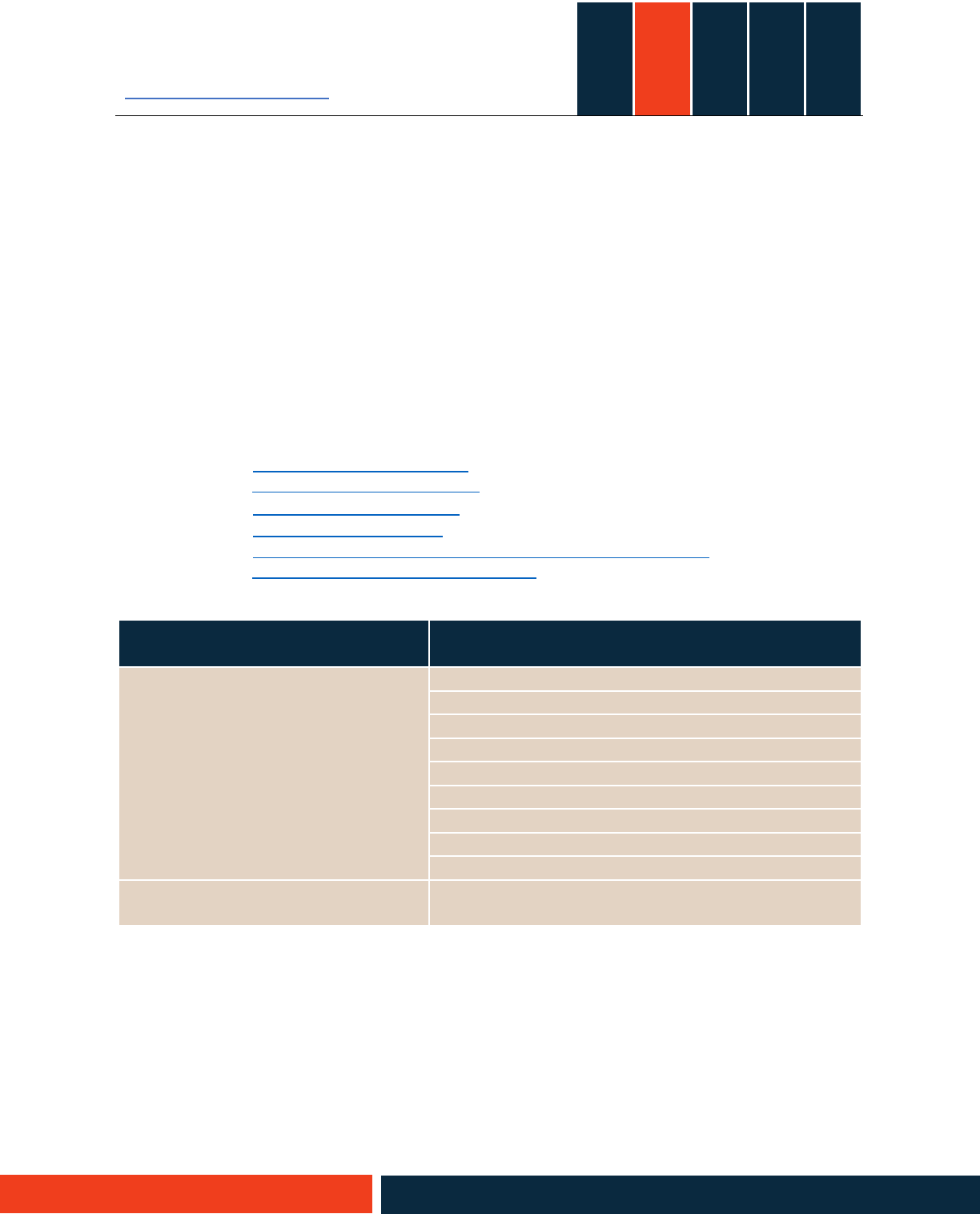
Back to PM Activity Diagram
Project
Initiation
Alignment
Defined
Plan-in-Hand
PS&E/Letting
Post-Letting/
Construction
2PM4 Hold Right of Way, Utility, & Permits Strategy Meeting(s) 25
November 2021
NCDOT
2PM4 Hold Right of Way, Utility, & Permits Strategy Meeting(s)
Overview
The Project Manager organizes, leads, and facilitates the Right of Way, Utility, & Permits Strategy
Meeting(s) with the project team. The purpose of these meetings is to develop a strategy to optimize
delivery of the right of way acquisition, utility agreements and utility relocations, as well as the timeline
for permit applications. Each of these areas relate to external stakeholder interests and needs. Therefore,
these meetings are held early and are likely recurring throughout project delivery. During the meetings,
the project team coordinates responsibilities, identifies supporting documentation, and establishes a
schedule. They also engage in cross-discipline dialogue to address changes caused by new information
presented during progression of the design.
References
Preconstruction Finance Guide
Project Delivery Network (PDN) (Tools/Templates)
NCDOT Right of Way Manual
STIP Cost Estimate Process (Internal NCDOT Only)
Utility WBS Phase 250 – Utilities Relocation WBS – Nov 11, 2020 (Internal NCDOT Only)
Agenda and Meeting Minutes Template (Tools/Templates)
Deliverables
Deliverable
Task
1
Meeting Agenda
Meeting Materials
Meeting Notes
Setup Meeting(s) and Develop Agenda(s)
Invite Attendees
Distribute Meeting Materials
Hold Right of Way Strategy Meeting
– Identify High Risk Right of Way Parcels
– Coordinate Right of Way Acquisition Schedule
Hold Utility Strategy Meeting
Hold Permits/Agreements Strategy Meeting
Document and Distribute Meeting Notes
Authorization Request Letters
Right of Way and Utility Funds Authorized
Request Authorization and Funds
1
Responsible Party: The Project Manager completes the tasks outlined in the table.
Set Up Meeting(s) and Develop Agenda(s)
The Project Manager sets up the meeting(s) and develops the agenda(s) with the appropriate discipline
leads. Depending on the size and complexity of the project, one or more meetings held jointly or
separately may be necessary to adequately develop appropriate strategies for right of way, utilities, and
permits.

Back to PM Activity Diagram
Project
Initiation
Alignment
Defined
Plan-in-Hand
PS&E/Letting
Post-Letting/
Construction
2PM4 Hold Right of Way, Utility, & Permits Strategy Meeting(s) 26
November 2021
NCDOT
Invite Attendees
The Project Manager invites project team members and necessary stakeholders (internal and external) to
the Right of Way, Utility, & Permit(s) Strategy Meeting(s). In addition to the potential invitees listed below,
other disciplines may be necessary based on the types of permits, agreements, resources, etc.
Meeting Invitees
Division Construction Engineer
Division Environmental Officer
Division Project Development Engineer & Team Lead
Division Right of Way Agent
Division Utility Staff
Environmental Lead(s)
Erosion & Sediment Control Lead
Hydraulics Lead
Locations and Survey Lead
Permits Coordinator Project Manager
Resident Engineer
Right of Way Lead
Roadway Design Lead
Utility Coordinator & Design Lead
Distribute Meeting Materials
The Project Manager gathers all relevant project materials (e.g., agenda, preliminary plans, etc.) and
distributes them to the meeting invitees prior to the Right of Way, Utility, & Permits Strategy Meeting(s)
Requesting comments prior to the meeting allows the meeting coordinators (see overview) to prioritize
comments effecting SSBQR resulting in shorter more efficient meetings. The meeting coordinators notify
the meeting invitees of the appropriate platform for performing and capturing the review comments.
Reviewers document their comments and return them to the designated recipient prior to the meeting.
If comments are requested/collected prior to the meeting date, the Project Manager informs the project
reviewers of the timeframe allotted for review.
Hold Right of Way Strategy Meeting
The Project Manager facilitates the discussions outlined in the Right of Way Strategy Meeting agenda, see
Identify High Risk Right of Way Parcels below (sub-task in this activity) for discussion topics.
Identify High Risk Right of Way Parcels
During the Right of Way Meeting, the Project Manager evaluates the overall risks and determines the
need for advanced acquisitions, discussions may include but are not limited to:
Parcels to avoid and high-risk parcels
High price parcels or parcels with a high potential for prolonged acquisition resulting in a delay to
the project delivery schedule
Impacts and improvements, such as driveways, sidewalks, drainage features, fences, commercial
signage, etc. that may pose the need for avoidance or acquisition, based upon the most recent and
relevant project design available at the time of the meeting
Consideration for use of advanced acquisitions for utility relocations
Process for requesting and distribution of right of way revisions
Design alternatives that may avoid these parcels, consider:
– Can a straight right of way setback be used on this project?

Back to PM Activity Diagram
Project
Initiation
Alignment
Defined
Plan-in-Hand
PS&E/Letting
Post-Letting/
Construction
2PM4 Hold Right of Way, Utility, & Permits Strategy Meeting(s) 27
November 2021
NCDOT
– Can the right of way be widened to one side or the other?
– Could other mitigation measures (alignment shift, retaining wall, etc.) be more practical
compared to
right of way impacts?
Coordinate Right of Way Acquisition Schedule
The project team identifies right of way requirements, discusses the process for requesting and
distributing right of way revisions, discusses mitigation strategies and an initial right of way acquisition
schedule for each parcel. The following are elements to consider in the development of the right of way
acquisition schedule:
Funding sources and constraints (federal versus state)
Total acquisitions versus partial acquisitions
Relocations required by type (business versus non-business)
Parcels eligible for Advanced Acquisition prior to environmental clearance
Priority parcels, including opportunity for Advanced Acquisition, for utility relocation
Prioritize the order of acquisition (those that take more time are prioritized first)
Schedule for funding authorization requests and acquisitions as outlined in PDN RIGHT OF WAY
activities
Should the project team identify Advanced Acquisitions, the Project Manager works with the Right Of Way
Discipline Lead to follow the processes outlined in the activity Initiate Advance Acquisition Right of Way
Tasks (2RW1) and the Right of Way Manual. The Project Manager facilitates the team interaction to help
them develop actions and assignments to complete right of way acquisitions.
Hold Utility Strategy Meeting
The Utility Coordinator/Design Lead provides the team an updated utility inventory, risk assessment
worksheet, cost estimates, schedules to align the team on utility strategy including schedule and budget
implications, and any partnering terms or betterments. In addition, the project team discusses potential
utility conflicts through coordination with utility owners and designers. The project team gives specific
attention to possible impacts to environmental or permitting activities and tasks within the PDN caused
by utility relocations by others.
The project team brainstorms design alternatives that may minimize or mitigate perceived impacts to
utilities that occur in construction and in their final location. The Utility Coordinator/Design Lead or
Resident Engineer’s Office oversees the utility relocation by others. The Project Manager coordinates with
the Division’s Utility Engineer and Division Construction Engineer to determine the lead party for utilities
relocation by others. To progress utility work, the Project Manager facilitates team interaction to help
them develop plans, assignments, strategies for phased utility relocation (including clearing), which
impacts both schedule and environmental processes.
The project team considers techniques to expedite utility relocation by others such as early right of way
acquisition, acquisition of priority parcels, acquisition of permanent utility parcels, phased right of way
acquisition, and utility relocation for the project, as well as techniques for clearing utility easements.

Back to PM Activity Diagram
Project
Initiation
Alignment
Defined
Plan-in-Hand
PS&E/Letting
Post-Letting/
Construction
2PM4 Hold Right of Way, Utility, & Permits Strategy Meeting(s) 28
November 2021
NCDOT
Hold Permits/Agreements Strategy Meeting
The Project Manager, in coordination with appropriate discipline leads, discusses agreements, green sheet
stakeholder commitments, cost estimates, schedules for obtaining the permits and agreements, as well
as outstanding issues. Permits and/or agreements may include but are not limited to municipal
agreements, railroad encroachment agreements, utility agreements, land transfer, Section 106 MOA,
FEMA’s National Flood Insurance Program Conditional Letter Of Map Revision (CLOMR), as well as
conservation easement agreements. The Project Manager facilitates the team interaction to help them
develop plans and assignments to complete the permits and applications for the project. Considerations
may include:
Environmental impacts/permitting from utility relocations by others
Dates for environmental permit applications and receipt of permits
Dates that utility relocations by others need to begin (a utility relocation kickoff date)
Permit requirements that utility companies are responsible to obtain
Document/Distribute Notes
The Division Construction Engineer facilitates the team discussions to resolve the comments and
document dispositions. The Project Manager facilitates other discussions as outlined in the agenda, then
the Project Manager or designee documents discussions and decisions in the meeting notes. The Project
Manager notifies all project team members that the Right of Way, Utility and/or Permits Strategy meeting
notes are available and may distribute them or provide a link with their location
Request Authorization and Funds
The Project Manager adheres to the processes and procedures outlined in the Utility and Right of Way
PDN activities to request authorization/release of right of way and utility funds as necessary to progress
the work.

Back to PM Activity Diagram
Project
Initiation
Alignment
Defined
Plan-in-Hand
PS&E/Letting
Post-Letting/
Construction
2PM5 Hold Field Inspection Review Meeting 29
November 2021
NCDOT
2PM5 Hold Field Inspection Review Meeting
Overview
The Project Manager organizes and coordinates this meeting with the Roadway Design Engineer and
Division Construction Engineer. The Division Construction Engineer leads and facilitates the Field
Inspection Review Meeting. The purpose of this review meeting is to provide a point of assessment to
understand and resolve any issues of adherence with the scope, schedule, and budget commitments. It
also provides for multidisciplinary feedback for any issues, opportunities, challenges, conflicts, or
omissions in the scope of work. The team also considers the needs and commitments for right of way,
utilities, permitting, constructability, and local jurisdiction. A thorough review during this stage helps to
reduce rework during subsequent project delivery stages and prevention of potential obstacles to
construction that lead to errors, delays, and/or overruns.
References
Combined Field Inspection Questions (Download)
Project Delivery Network (PDN) (Tools/Templates)
Quality Management Manual
Value Management Office
Constructability Review Program
Constructability Review Checklist
Risk Assessment Program
Risk Assessment Worksheet (RAW)
Risk Management Guide
Agenda and Meeting Minutes Template (Tools/Templates)
Deliverables
Deliverable Task
1
Meeting Agenda
Meeting Materials
Meeting Notes
Setup Meeting and Develop Agenda
Invite Attendees
Distribute Meeting Materials
Hold Meeting and Document/Distribute Notes
1
Responsible Party: The Project Manager completes the tasks outlined in the table.
Setup Meeting and Develop Agenda
The Project Manager assists the Division Construction Engineer with setting up the meeting and
developing the agenda. The Field Inspection Review Meeting discussions may include but are not limited
to:
Review comments received
Combined Field Inspection Questions
Review Project Definition Document (if developed for this project)

Back to PM Activity Diagram
Project
Initiation
Alignment
Defined
Plan-in-Hand
PS&E/Letting
Post-Letting/
Construction
2PM5 Hold Field Inspection Review Meeting 30
November 2021
NCDOT
Project Design Criteria (PDC)
Design exceptions
Plan sheet review by discipline
Design conflicts between disciplines
Project special provisions
Project cost estimate
Risks and mitigation
Permits, agreements, and commitments (environmental, right of way, utility, and public
involvement)
Project schedule
Quality commitments and expectations
Constructability Review Checklist
Field Review
Invite Attendees
The Project Manager invites project team members and necessary stakeholders (internal and external) to
the Field Inspection Review Meeting. Potential invitees include:
Meeting Invitees
Area Construction Engineer
Congestion Management Lead
Contract Standards Lead
District Engineer
Division Construction Engineer
Division Engineer
Division Environmental Officer
Division Maintenance Engineer
Division Planning/Corridor Development Engineer
Division Right of Way Agent
Division Traffic Engineer
Division Utility Staff
Environmental Lead(s)
Erosion & Sediment Control Lead
Geotechnical Lead
Hydraulics Lead
Integrated Mobility Lead
Location and Surveys Lead
Municipalities (MPO/RPO)
Project Manager
Public Involvement Lead
Rail Lead
Regional Traffic Engineer & Delineation Lead
Resident Engineer
Right of Way Lead
Roadway Design Lead
Signal & ITS Design Lead
Signing & Delineation Lead
State Transportation Improvement Program Representative
Structures Design Lead
Traffic Safety Lead
Transportation Planning
Utility Coordinator & Design Lead
Value Management Lead
Work Zone Traffic Control Lead
Distribute Meeting Materials
The Project Manager works with the Roadway Design Lead to gather all relevant materials (e.g.,
Constructability Review Checklist, Combined Field Inspection Questions, meeting notes from the
Constructability Review if one was held, and the compiled Plan Set from Prepare for Field Inspection
(2RD2)) and distributes these materials to the meeting invitees prior to the Field Inspection Review
Meeting.

Back to PM Activity Diagram
Project
Initiation
Alignment
Defined
Plan-in-Hand
PS&E/Letting
Post-Letting/
Construction
2PM5 Hold Field Inspection Review Meeting 31
November 2021
NCDOT
Requesting comments prior to the meeting allows the meeting coordinators (see overview) to prioritize
comments effecting SSBQR resulting in shorter more efficient meetings. The meeting coordinators notify
the meeting invitees of the appropriate platform for performing and capturing the review comments.
Reviewers document their comments and return them to the designated recipient prior to the meeting.
If comments are requested/collected prior to the meeting date, the Project Manager informs the project
reviewers of the timeframe allotted for review.
Hold Meeting and Document/Distribute Notes
The Division Construction Engineer facilitates the team discussions to resolve the comments and
document dispositions. The Project Manager facilitates other discussions as outlined in the agenda, then
the Project Manager or designee documents discussions and decisions in the meeting notes. The Project
Manager notifies all project team members that the Field Inspection Review meeting notes are available
and may distribute them or provide a link with their location.

Back to PM Activity Diagram
Project
Initiation
Alignment
Defined
Plan-in-Hand
PS&E/Letting
Post-Letting/
Construction
3PM2 Hold Right of Way Final Plan Set Review Meeting 32
November 2021
NCDOT
3PM2 Hold Right of Way Final Plan Set Review Meeting
Overview
The Project Manager organizes the Right of Way Final Plan Set Review Meeting with the project team
prior to requesting right of way funds. The Division Construction Engineer facilitates and leads the
meeting. The project team reviews the final right of way plans and ensures that all right of way documents
are consistent with the latest scope, schedule and budget commitments, project design comments and
resolution of risks, and stakeholder commitments.
A Right of Way Final Plan Set Review Meeting may not be necessary based on when the field inspection
was held, and the comments received during the Field Inspection Review (2PM5).
References
Project Delivery Network (PDN) (Tools/Templates)
Quality Management Manual
Value Management Office
Risk Assessment Program
Risk Assessment Worksheet (RAW)
Risk Management Guide
Agenda and Meeting Minutes Template (Tools/Templates)
Deliverables
Deliverable Task
1
Meeting Agenda
Review Materials
Meeting Notes
Setup Meeting and Develop Agenda
Invite Attendees
Distribute Meeting Materials
Hold Meeting and Document/Distribute Notes
1
Responsible Party: The Project Manager completes the tasks outlined in the table.
Setup Meeting and Develop Agenda
The Project Manager sets up the meeting and develops the agenda with the Division Construction
Engineer, the Roadway Design Engineer and Right of Way Lead, then verifies that the right of way plan
sets have incorporated the final design and all other required documentation. A quality review confirms
that no significant changes have occurred since the Field Inspection Review. The Right of Way Final Plan
Set Review Meeting discussions may include but are not limited to:
Right of way action items from previous major milestones or team meetings
Resolution of comments from previous design review and team meetings
Resolution of risk issues
Right of way cost estimate
Quality commitments and expectations

Back to PM Activity Diagram
Project
Initiation
Alignment
Defined
Plan-in-Hand
PS&E/Letting
Post-Letting/
Construction
3PM2 Hold Right of Way Final Plan Set Review Meeting 33
November 2021
NCDOT
Invite Attendees
The Project Manager consults the Division Construction Engineer and the Roadway Design Lead to
determine invitees to the Right of Way Final Plan Review Meeting. Potential invitees include:
Meeting Invitees
1
Division Construction Engineer
Division Project Development Engineer & Team Lead
Environmental Lead(s)
Erosion & Sediment Control Lead
Hydraulics Lead
Permits Coordinator
Project Manager
Resident Engineer
Right of Way Lead
Roadway Design Lead
Utility Coordinator & Design Lead
1
This meeting may require additional participation depending upon the completeness of plans at the Field Inspection Review
Meeting (2PM5), the type and number of unresolved comments, and/or the time elapsed since that meeting. Consider including
the discipline leads invited to the Field Inspection Review Meeting (2PM5.)
Distribute Meeting Materials
The Project Manager gathers all relevant project materials (e.g., agenda, plan sets, etc.) and distributes
them to the meeting invitees prior to the Right of Way Final Plan Set Review Meeting.
Requesting comments prior to the meeting allows the meeting facilitator(s) (see overview) to prioritize
comments effecting SSBQR resulting in shorter more efficient meetings. The meeting coordinators notify
the meeting invitees of the appropriate platform for performing and capturing the review comments.
Reviewers document their comments and return them to the designated recipient prior to the meeting.
If comments are requested/collected prior to the meeting date, the Project Manager informs the project
reviewers of the timeframe allotted for review.
Hold Meeting and Document/Distribute Notes
The Division Construction Engineer facilitates the team discussions to resolve the comments and
document dispositions. The Project Manager facilitates other discussions as outlined in the agenda, then
the Project Manager or designee documents discussions and decisions in the meeting notes. The Project
Manager notifies all project team members that the Right of Way Final Plan Set Review meeting notes are
available and may distribute them or provide a link with their location.

Back to PM Activity Diagram
Project
Initiation
Alignment
Defined
Plan-in-Hand
PS&E/Letting
Post-Letting/
Construction
3PM3 Hold Design Complete Review Meeting 34
November 2021
NCDOT
3PM3 Hold Design Complete Review Meeting
Overview
The Project Manager organizes, and the Division Construction Engineer leads and facilitates the Design
Complete Review Meeting. The purpose of this review meeting is to provide a point of assessment to
understand and resolve any issues of adherence with scope, schedule, and budget commitments. The
team considers the needs and commitments for right of way, utilities, permit applications, and local
jurisdiction agreements. The meeting allows the project team to collaboratively discuss plan set quality
and constructability review comments to ensure a biddable and constructable project is delivered.
References
Pre-Let Field Inspection Questions (Download)
Quality Management Manual
Value Management Office
Constructability Review Program
Constructability Review Checklist
Risk Assessment Program
Risk Assessment Worksheet (RAW)
Risk Management Guide
Agenda and Meeting Minutes Template (Tools/Templates)
Deliverables
Deliverable Task
1
Meeting Agenda
Meeting Materials
Meeting Notes
Setup Meeting and Develop Agenda
Invite Attendees
Distribute Meeting Materials
Hold Meeting and Document/Distribute Notes
1
Responsible Party: The Project Manager completes the tasks outlined in the table.
Setup Meeting and Develop Agenda
The Project Manager assists the Division Construction Engineer with setting up the meeting and
developing the agenda. The Design Complete Review Meeting discussions may include but are not limited
to:
Project Definition Document (if developed for this project)
Comments received
Pre-Let Field Inspection Questions
Project Design Criteria (PDC)
Design exceptions
Plan sheet review by discipline
Design conflicts between disciplines

Back to PM Activity Diagram
Project
Initiation
Alignment
Defined
Plan-in-Hand
PS&E/Letting
Post-Letting/
Construction
3PM3 Hold Design Complete Review Meeting 35
November 2021
NCDOT
Project Special Provisions
Project cost estimate
Risks and mitigation
Permits, agreements, and commitments (environmental, right of way, utility, and public interest)
Project schedule
Right of way acquisition (status update)
Utility relocation by others (status update)
Quality commitments and expectations
Constructability and biddability
Invite Attendees
The Project Manager invites project team members and necessary stakeholders (internal and external) to
the Design Complete Review Meeting. Potential invitees include:
Meeting Invitees
Area Construction Engineer
Congestion Management Lead
Contract Standards Lead
District Engineer
Division Bridge Program Manager
Division Construction Engineer
Division Engineer
Division Environmental Officer
Division Maintenance Engineer
Division Planning/Corridor Development Engineer
Division Project Development Engineer & Team Lead
Division Traffic Engineer
Environmental Lead(s)
Erosion & Sediment Control Lead
Geotechnical Lead
Hydraulics Lead
Integrated Mobility Lead
Location and Surveys Lead
Municipalities (MPO/RPO)
Pavement Design Lead
Project Manager
Public Involvement Lead
Rail Lead
Regional Traffic Engineer & Delineation Lead
Resident Engineer
Right of Way Lead
Roadway Design Lead
Signal & ITS Design Lead
Signing & Delineation Lead
State Transportation Improvement Program Representative
Structures Design Lead
Traffic Safety Lead
Transportation Planning
Utility Coordinator & Design Lead
Value Management Lead
Work Zone Traffic Control Lead
Distribute Meeting Materials
The Project Manager works with the Division Construction Engineer to gather all relevant materials (e.g.,
agenda, Pre-Let Field Inspection Questions, Plan in Hand Review Plan Set, etc.) and distributes these
materials to the meeting invitees prior to the Design Complete Review Meeting.
Requesting comments prior to the meeting allows the meeting facilitator(s) (see overview) to prioritize
comments effecting SSBQR resulting in shorter more efficient meetings. The meeting coordinators notify
the meeting invitees of the appropriate platform for performing and capturing the review comments.
Reviewers document their comments and return them to the designated recipient prior to the meeting.

Back to PM Activity Diagram
Project
Initiation
Alignment
Defined
Plan-in-Hand
PS&E/Letting
Post-Letting/
Construction
3PM3 Hold Design Complete Review Meeting 36
November 2021
NCDOT
If comments are requested/collected prior to the meeting date, the Project Manager informs the project
reviewers of the timeframe allotted for review.
Hold Meeting and Document/Distribute Notes
The Division Construction Engineer facilitates the team discussions to resolve the comments and
document dispositions. The Project Manager facilitates other discussions as outlined in the agenda, then
the Project Manager or designee documents discussions and decisions in the meeting notes. The Project
Manager notifies all project team members that the Design Complete Review meeting notes are available
and may distribute them or provide a link with their location.

Back to PM Activity Diagram
Project
Initiation
Alignment
Defined
Plan-in-Hand
PS&E/Letting
Post-Letting/
Construction
4PM2 Support Construction Post-Letting 37
November 2021
NCDOT
4PM2 Support Construction Post-Letting
Overview
The purpose of this activity is to establish appropriate resources to support the construction management
team through project closeout. The Project Manager and project team provide construction engineering
support and/or communication support for the construction management team, as applicable.
The NCDOT Project Manager confirms the construction Work Breakdown Structure (WBS) has been
authorized/released for charges and cedes responsibility for budget, scope, and schedule to the Division
Construction Engineer or designee once the project is let. The Project Manager consults the PDN activity
Construction Revisions (5CS1) for further detail on their responsibilities during this stage.
References
2-11-2021 NCDOT Construction Revision Memorandum (Design Resources Page
Under Memos, Design)
Construction Revision Memorandum Example
Policies and Procedures for Procurement and Administration of Major Professional or
Specialized Services Contracts
Post Construction Assessments Access (Green Login Button Right Side Under Project
Knowledge Sharing)
Preconstruction Finance Guide
Professional Engineering Firm Management Guide
Project Delivery Network (PDN) (Tools/Templates)
STIP Cost Estimate Process (Internal NCDOT Only)
Deliverables
Deliverable Task
1
Construction Funds Authorized Request Construction Funds
Construction Services Support Construction Post-Letting
1
Responsible Party: The Project Manager completes the tasks outlined in the table.
Request Construction Funds
The NCDOT Project Manager is responsible for ensuring that the plans, specifications, and estimates
(PS&E) package is complete, and the construction funding is requested prior to advertisement. This is
accomplished by following the processes and procedures outline in the Preconstruction Finance Guide.
For Division-Let projects, when a project has progressed through the right of way phase and is scheduled
in the STIP (State Transportation Improvement Program) for construction (prior to advertising for bids),
the NCDOT Project Manager confirms that the Construction WBS Element(s) (Work Breakdown Structure)
have been authorized/released for charges. The Project Manager accomplishes this by following the
processes and procedures outline in the Preconstruction Finance Guide, ensuring that the project meets
the requirements to be funded for construction.

Back to PM Activity Diagram
Project
Initiation
Alignment
Defined
Plan-in-Hand
PS&E/Letting
Post-Letting/
Construction
4PM2 Support Construction Post-Letting 38
November 2021
NCDOT
For Central-Let projects, when a project has progressed through the right of way phase and is scheduled
in the STIP for construction (prior to advertising for bids), the NCDOT Project Manager coordinates with
the Contract Standards and Estimating staff and confirms that the processes and procedures outlined in
the Preconstruction Finance Guide have been completed.
Support Construction Post-Letting
The NCDOT Project Manager is the main point of contact for design, right of way, and utility support during
construction activities (e.g., construction revision form letters, right of way changes, maintaining
electronic plan sets in SharePoint, etc.) The Project Manager attends the preconstruction meeting—post-
letting—with the awarded contractor.
The NCDOT Project Manager, together with the Division Construction Engineer or their designee, prepares
a scope of services, budget, and schedule to provide construction engineering support services. This may
include design support, request for information (RFI) support, and/or communication support (if
applicable) for the construction management team. The NCDOT Project Manager coordinates engineering
support services with the design team. Since construction design support services are paid for under the
construction WBS, the NCDOT Project Manager informs the Resident Engineer of design expenses during
construction. The Project Manager works closely with the Resident Engineer to ensure a smooth transition
as construction begins and when permitting modifications are identified.
When a professional engineering firm (PEF) delivers construction engineering design support services, the
NCDOT Project Manager obtains their services in accordance with Policies and Procedures for Procurement
and Administration of Major Professional or Specialized Services Contracts, and the Preconstruction
Finance Guide.
In accordance with the CLEAR program, the Project Manager documents any changes that impact
delivering the preliminary engineering or the construction portion of the project. Contributing to and
searching for solutions in the CLEAR database ultimately produces better design documents (including a
better and safer design), and a more contractor-friendly bid package. Note: External consultants (PEFs)
submit best practices and lessons learned through the form found at Post Construction Assessments
(ncdot.gov).

Back to PM Activity Diagram
Project
Initiation
Alignment
Defined
Plan-in-Hand
PS&E/Letting
Post-Letting/
Construction
4PM3 Hold PS&E Review Meeting 39
November 2021
NCDOT
4PM3 Hold PS&E Review Meeting
Overview
The Project Manager organizes, leads, and facilitates a Plans, Specifications, and Estimates (PS&E) Review
Meeting with the Roadway Design Lead and the Contract Standards & Development staff or the Division
Proposals Engineer before submitting the roadway design plan set/PS&E. The purpose of this meeting is
to review and ensure a complete contract package.
References
3-22-2021 Memo to DEs, PMs, Corridor Eng – Approval for Cost Verification (Internal
NCDOT Only)
Certifications Required for STIP Projects Memo – Jan 25, 2021
Bidding & Letting
Division Let Contract Guidance (2021 Division Let Guidance March under
Featured)
Preconstruction Finance Guide
Project Delivery Network (PDN) (Tools/Templates)
Project Flow Chart Generator (Central Let Projects)
Quality Management Manual
STIP Cost Estimate Process (Internal NCDOT Only)
Verified Estimates Interim 5W’s Guide for STIP Projects (Internal NCDOT Only)
Agenda and Meeting Minutes Template (Tools/Templates)
Deliverables
Deliverable Task
1
Meeting Agenda
Meeting Materials
Meeting Notes
Setup Meeting and Develop Agenda
Invite Attendees
Distribute Meeting Materials
Hold Meeting and Document/Distribute Notes
Finalize Project Documentation
Audit Right of Way, Utility, & Railroad Certifications
1
Responsible Party: The Project Manager completes the tasks outlined in the table.
Setup Meeting and Develop Agenda
The Project Manager sets up the PS&E meeting and develops the agenda with the Roadway Design Lead.
The PS&E Review Meeting discussions may include but are not limited to:
Resolution of comments
Outstanding issues (risks, commitments, mitigation)
Contract time
Project cost estimate
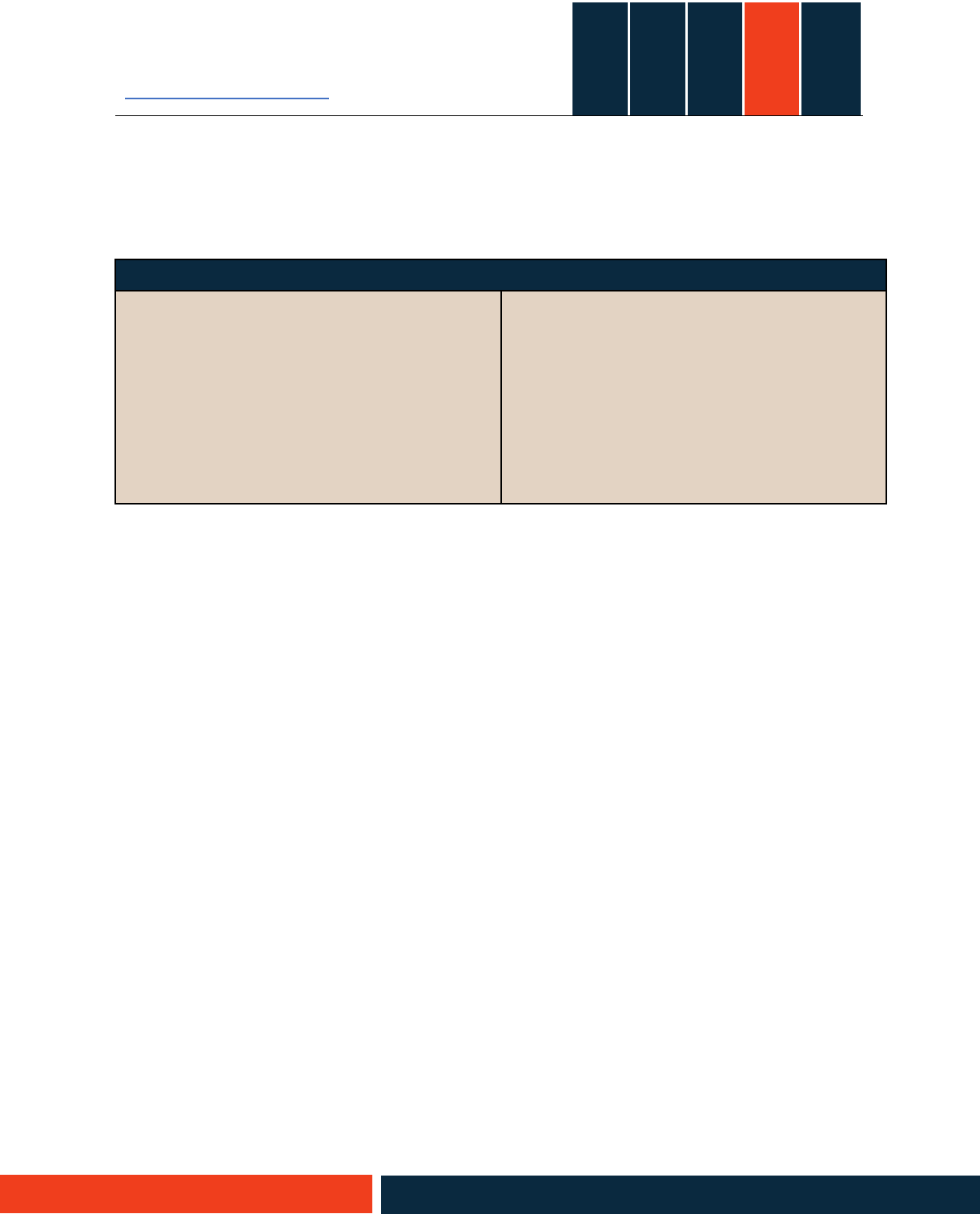
Back to PM Activity Diagram
Project
Initiation
Alignment
Defined
Plan-in-Hand
PS&E/Letting
Post-Letting/
Construction
4PM3 Hold PS&E Review Meeting 40
November 2021
NCDOT
Project special provisions
Participating and non-participating items for municipal and utility agreements
Invite Attendees
The Project Manager invites the following people to the PS&E Review Meeting:
Meeting Invitees
Congestion Management Lead
Contract Standards Lead or Division Proposals Engineer
Division Construction Engineer
Division Environmental Officer
Division Project Development Engineer & Team Lead
Environmental Lead(s)
Erosion & Sediment Control Lead
Hydraulics Lead
Integrated Mobility Lead
Project Manager(s)
Rail Lead
Resident Engineer
Right of Way Lead
Roadway Design Lead
Signal & ITS Design Lead
Signing & Delineation Lead
Structures Design Lead
Utility Coordinator & Design Lead
Work Zone Traffic Control Lead
Distribute Meeting Materials
The Project Manager works with the Roadway Design Lead to gather all relevant materials (e.g., Final
Roadway Design Plans, Specifications, and Estimate (PS&E), and all other required documentation to assist
the Contract Standards and Development Unit to develop the contract for Letting) and distributes these
materials to the meeting invitees prior to the PS&E Review Meeting.
Hold Meeting and Document/Distribute Notes
The Project Manager, in coordination with the Roadway Design Lead and the Contract Standards &
Development staff or the equivalent Division staff, holds the PS&E Review Meeting.
Requesting comments prior to the meeting allows the meeting facilitator(s) (see overview) to prioritize
comments effecting scope, schedule and budget resulting in shorter more efficient meetings. The meeting
coordinators notify the meeting invitees of the appropriate platform for performing and capturing the
review comments. Reviewers document their comments and return them to the designated recipient
prior to the meeting. If comments are requested/collected prior to the meeting date, the Project Manager
informs the project reviewers of the timeframe allotted for review.
The Project Manager facilitates other discussions as outlined in the agenda, then the Project Manager or
designee documents discussions and decisions in the meeting notes. The Project Manager notifies all
project team members that the PS&E Review meeting notes are available and may distribute them or
provide a link with their location.

Back to PM Activity Diagram
Project
Initiation
Alignment
Defined
Plan-in-Hand
PS&E/Letting
Post-Letting/
Construction
4PM3 Hold PS&E Review Meeting 41
November 2021
NCDOT
Finalize Project Documentation
The Roadway Design Lead and/or discipline leads update the plans and provide a response to all
comments. The Project Manager verifies that all comments are resolved, and all quality checklists, reviews
and documentation have been completed.
The Project Manager verifies modifications to the design plans, specifications, and estimates; and ensures
modifications are accurately incorporated into the contract package. The Project Manager verifies all
other required documentation (e.g., design exceptions, permits, agreements, certifications, and quality
checklists) has been finalized since the Design Complete Review Meeting (3PM3) and plan set
reconciliation.
The Project Manager reviews the complete contract package. This includes confirming the accuracy of
scope, schedule, and budget commitments; the completion and documentation of the commitments for
right of way, utilities, railroad certifications, permit applications, local jurisdiction agreements; and the
completion and documentation of the PS&E checklist items.
The Roadway Design Lead then proceeds to submit Final Plans as per Finalize the Final PS&E Package
(4RD1). The Project Manager notifies the project team Stage 4 is complete and the project is ready to Let.
Audit Right of Way, Utility, & Railroad Certifications
For all state and federally funded State Transportation Improvement Program (STIP) projects, the Project
Manager ensures certifications required for STIP Projects (in accordance with Memo from Chief Engineer
Dated January 25, 2021, indicating right of way, utility, railroad certifications and PS&E approval) are
completed prior to construction funding authorization. The certifications are complete upon submitting
the PS&E package, requirements vary according to location (Raleigh Let or Division Let projects.)
